Right before the turn of this century, Shanghai started a transformation that turned it from a faded old glory into China’s main economic powerhouse. Today, it stands as an overwhelming metropolis, where there’s always something new to discover. Trot Op! had the opportunity to visit the city multiple times in the past twelve years and poured all those experiences into a list of the ten main sights for a Shanghai city trip.
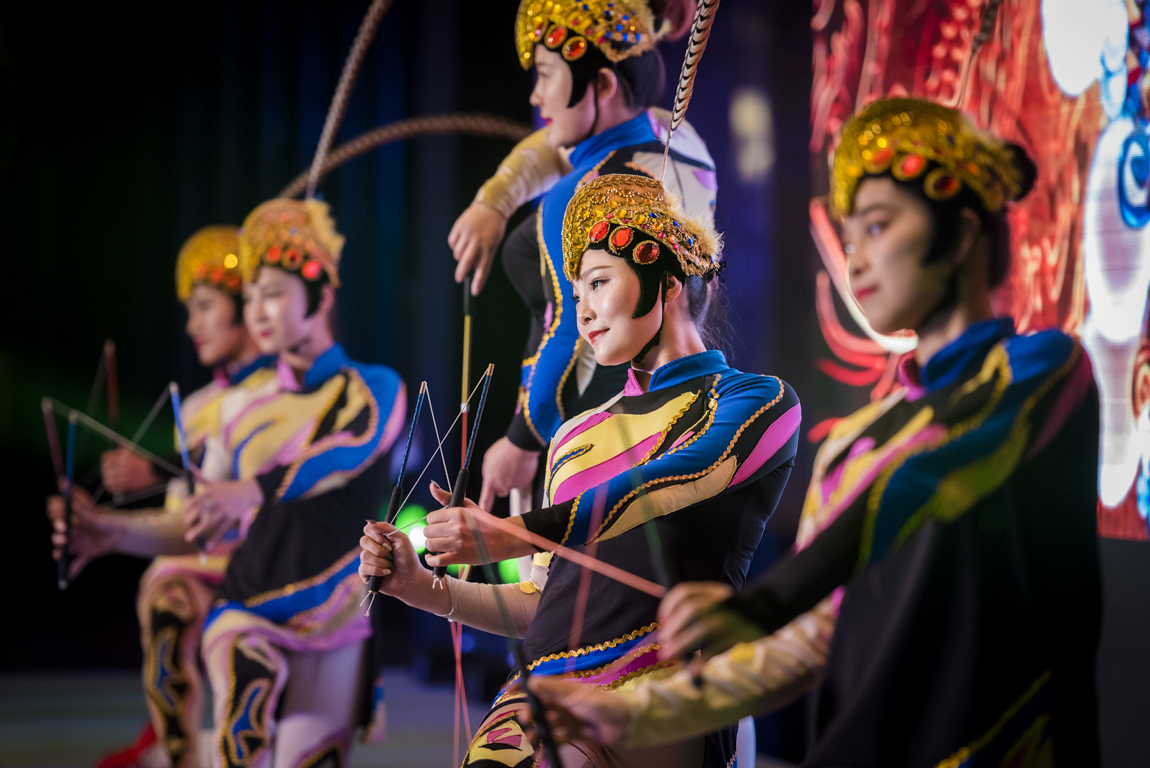
When I arrived in Shanghai in April 2011, it was my very first visit to a non-European metropolis. Having just finished university, this trip to China was my third work assignment after two short stints in the Netherlands and Spain. I’d been invited as a journalist to cover an international travel fair and had bought a fancy vest for the occasion to at least look like I was somewhat supposed to be there. I was left baffled upon arrival. A 268 mph Maglev train ride took me from the airport to the city centre in eight minutes, and looking across the water from the Bund promenade, I was greeted by an otherworldly jungle of futuristic, neon-lit skyscrapers. ‘Europe is old history,’ was my initial thought. ‘We’re a glorified museum to eat waffles and ice creams in.’ In five seconds, my perspective on the world had changed. Since then, I’ve travelled more than enough to realize things aren’t always what they seem, and Shanghai’s monumental skyline doesn’t necessarily say much about the quality of life of the average Chinese person. But at that moment, now years ago, I stood dumbfounded. Every time I returned to Shanghai afterwards, the first thing I did was to visit that same spot again to feel a glimpse of that same initial awe. Some views never get old.
Discover the 10 most beautiful sights & attractions in Shanghai
In Shanghai, there’s a saying that loosely translates to this: ‘If you want to see China’s past, head off to Beijing. If you want to experience the future, stay here in Shanghai.’ There’s more than a grain of truth in that statement (the two cities have a healthy rivalry). There’s not much traditional Chinese architecture left in Shanghai; almost all of it was bulldozed under the guise of progress. Yet the city has an interesting history as well. During the first decades of the 20th century – before the Japanese occupation and before the Communists took over the country – Shanghai was known as the Paris of the East. It was a melting pot of cultures in an otherwise conservative country. After the first Opium War, the British, the French and the Americans had all obtained their own concession here: small trading colonies where national Chinese legislation didn’t apply. Many ‘white’ Russians and German Jews who saw the rise of Hitler coming had also settled here. As a result, Shanghai took on a cosmopolitan vibe and accounted for about half of China’s international trade. The streets were overflowing with cafes, jazz clubs and whorehouses, and during the roaring twenties, half of Hollywood came here to smoke cigars in the most luxurious hotels.
“When I landed in Shanghai in April 2011, it was my very first visit to a non-European metropolis. I was invited as a journalist to cover an international travel fair, and when I arrived I was left dumbfounded.”
Those wonder years – which, by the way, were mainly fun for the expats – came to an end due to WWII and later under Mao’s rule. In the new communist China, Shanghai lost much of its influence and business appeal. As the city dwindled, almost all international companies moved to (at the time still British) Hong Kong, which in turn became the main trading city in the Far East. It wasn’t until the nineties that things started changing, but from then on everything went almost unimaginably fast. Today, Shanghai is a metropolis of a magnitude difficult to grasp for many Europeans. Paris is the largest city in the EU with 11 million inhabitants. Not bad, but Shanghai is home to more than 26 million people, and huge cities like Suzhou and Wuxi are nearby. If you want to get to the suburbs from the city centre, it will easily take more than an hour by car (taking the subway is almost always the better choice). Shanghai is an overwhelming megacity where everything is almost perpetually busy.*. Sometimes, this becomes a bit hard to deal with. Finding the rare quiet spots was one of my favourite activities while there, and every time I found one it felt like a reward. Most of the places I’ll discuss below are far from quiet though, so enjoy the ride, keep smiling and don’t forget to take a breather every now and then.
*All my trips to Shanghai took place before 2020. I didn’t get to experience the impact the covid-restrictions had on nightlife, tourism and the general middle class. I’ll share some thoughts near the end of the article.
1. The Bund: one of the world’s great promenades
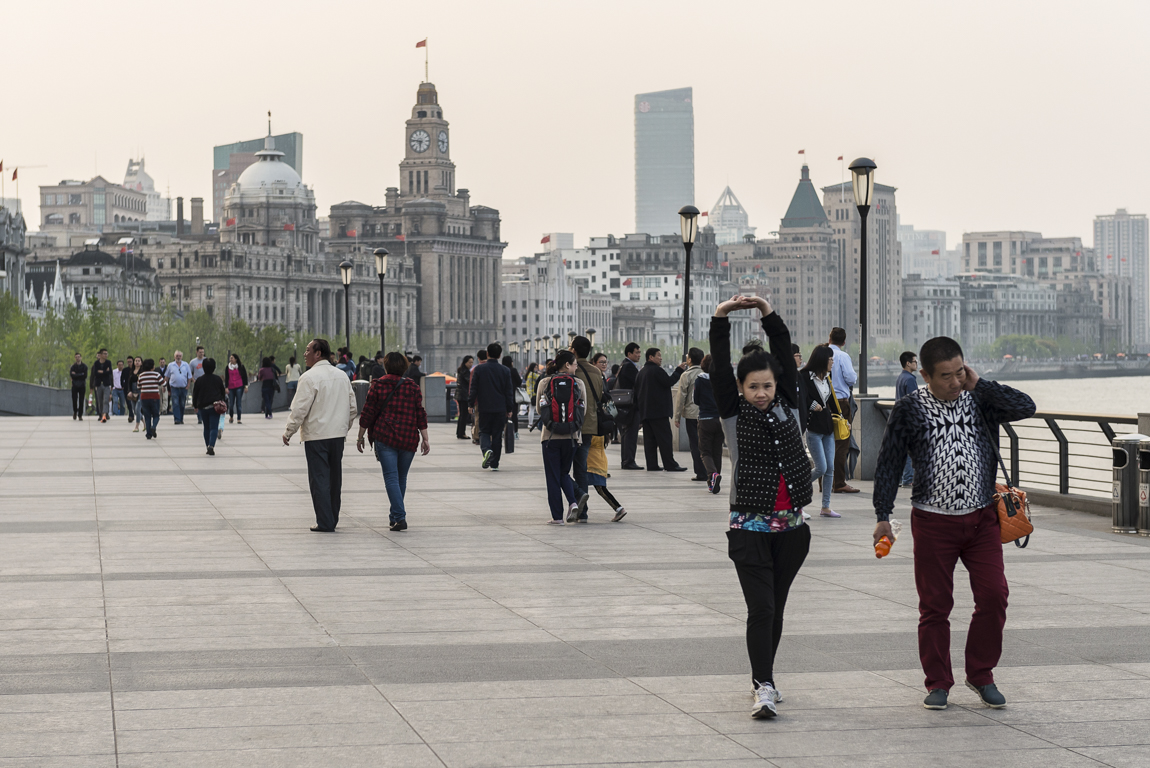
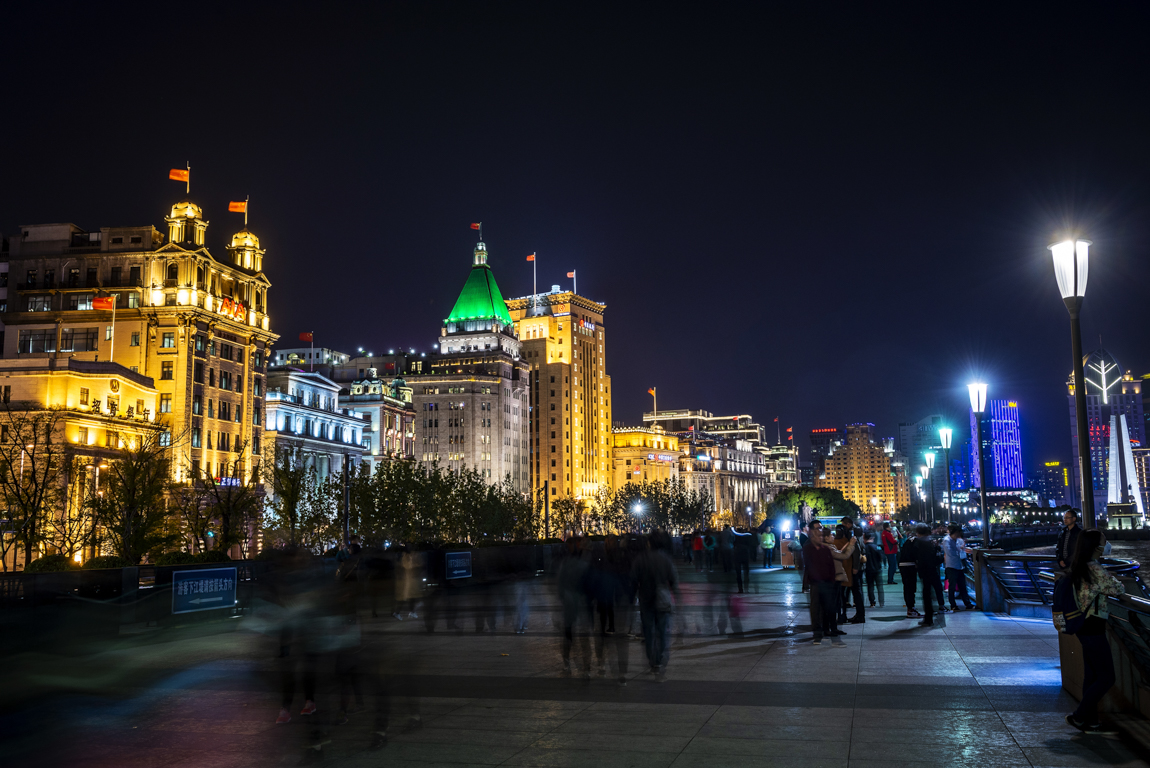
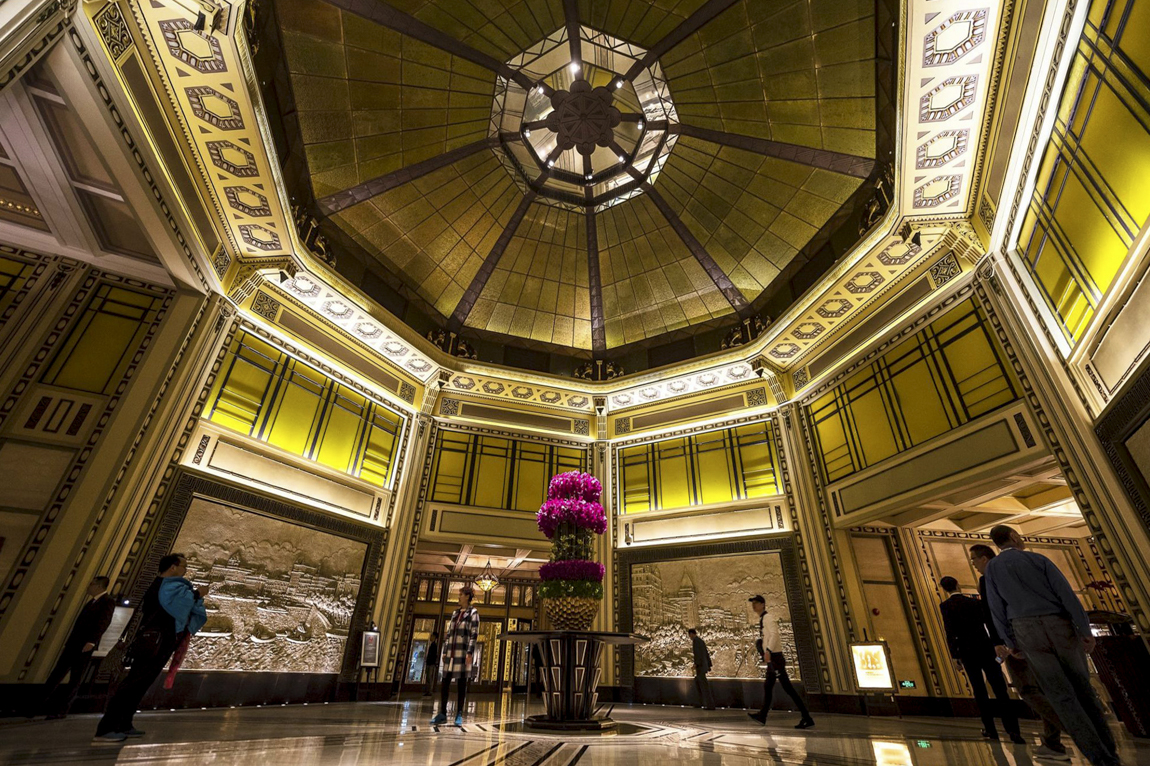
Nothing in Shanghai is more photogenic than the view from the Bund. This is the famous promenade along the Huangpu River that divides the city in two parts. At your back are the remnants of classic Shanghai: a succession of stately buildings from the time of the concessions. This was the Asian Wall Street of its time. On the other side of the water is the current version: the glitzy skyscrapers of Pudong. The combination of the two makes for one of the world’s most recognizable skylines. Many of the buildings on the Bund date from the early twentieth century and were finished in beautiful Art Deco style. The Fairmont Peace Hotel is one of them: China’s most legendary hotel and a gem of a building. The luxurious entrance hall is located under a massive glass dome; the jazz club exudes a hundred years of atmosphere and the roof terrace is phenomenal. The Peace Hotel is a relic from a bygone era, when Shanghai was a decadent destination where the rich and famous came to drink away their worries in an opium daze.
“Nothing in Shanghai is more photogenic than the view from the Bund. At your back are a succession of stately buildings from the time of the concessions. Across the water are the glitzy skyscrapers of Pudong.”
If you want to experience an echo of those days for yourself and you don’t mind drinking your cocktails in the company of a bunch of wealthy Russians and their girl of the day, you might want to go to Bar Rouge*. This might not sound very appealing, but the view makes up for it. This m’as-tu-vu club is located on the roof of one of the former embassies on the Bund, and the large open roof terrace offers one of the best possible views of Pudong. Dress up a bit, don’t be shocked by the cost of a beer, and don’t expect the world’s friendliest service, but pop in anyway to drink it all in. The last time I was there, I got to go on a free Chinese ambulance ride to take a colleague who had drank it all in a bit too enthusiastically to the ER. Another thing crossed off the bucket list.
*During the COVID lockdowns, Bar Rouge had to close continuously for almost three years. This proved to be its end. By now everything is allowed to reopen, but Bar Rouge became Bar KEV. Most of the furniture and the atmosphere were apparently preserved.
2. Pudong: a skyline to marvel at
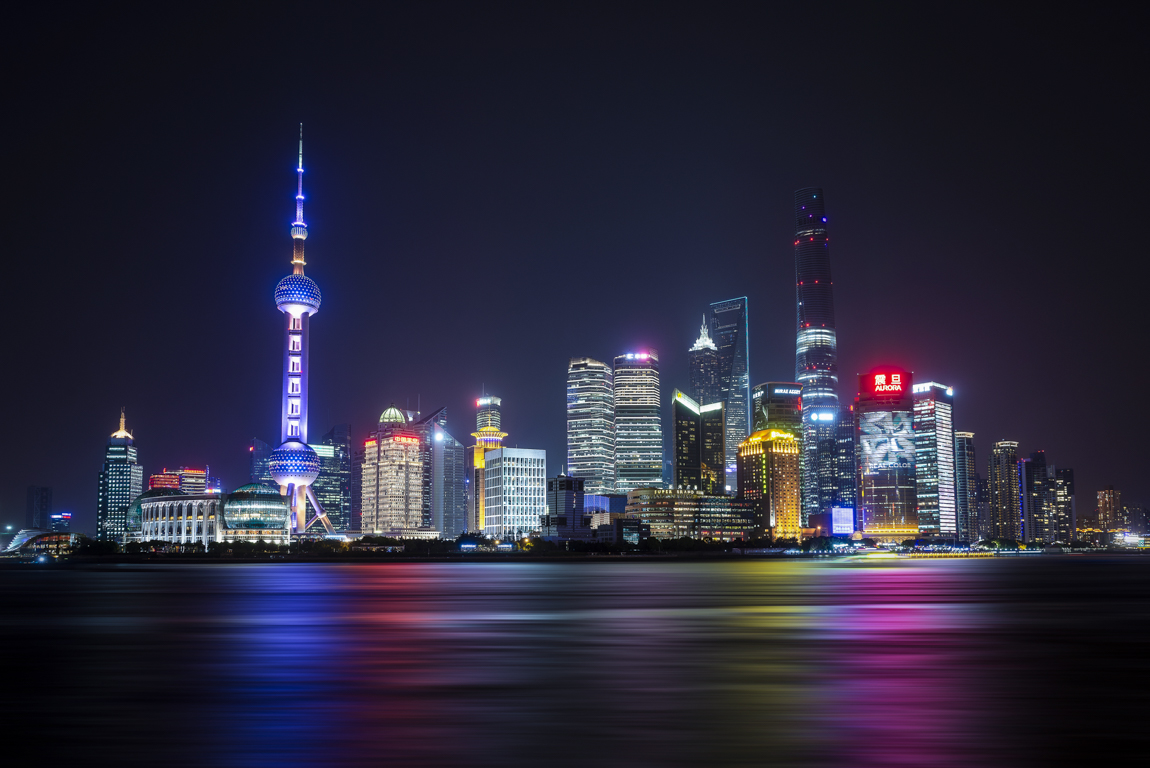
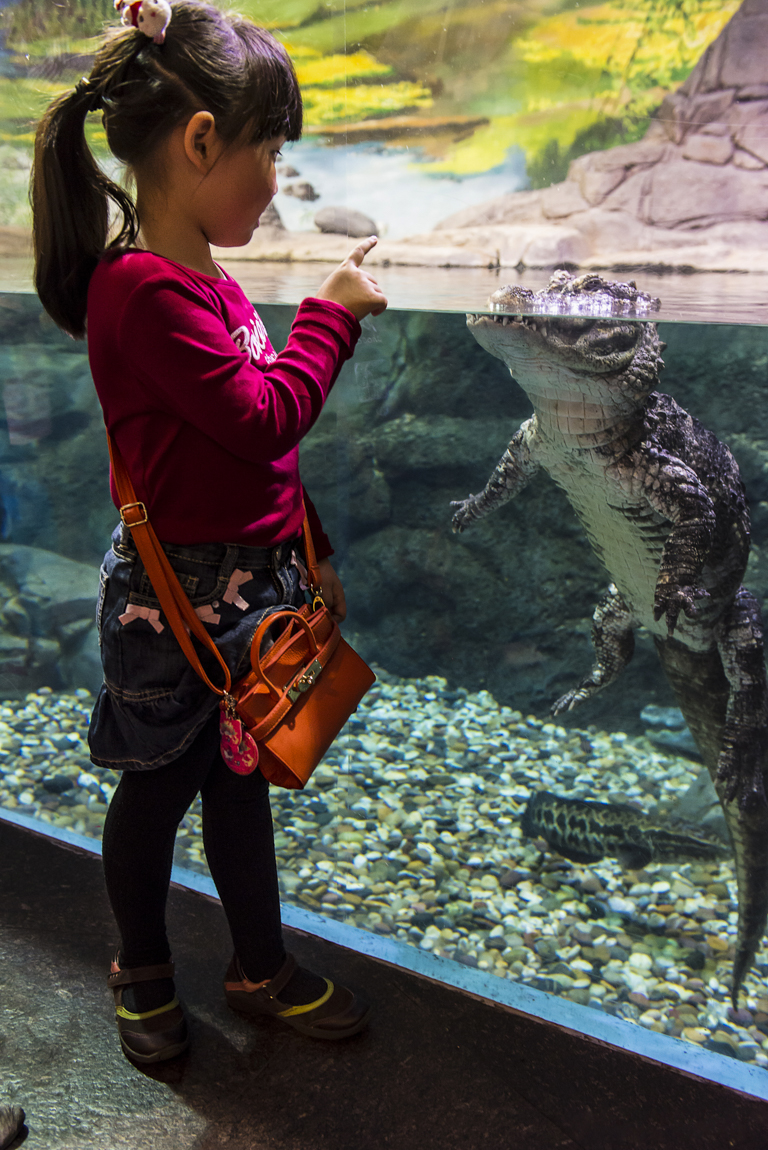
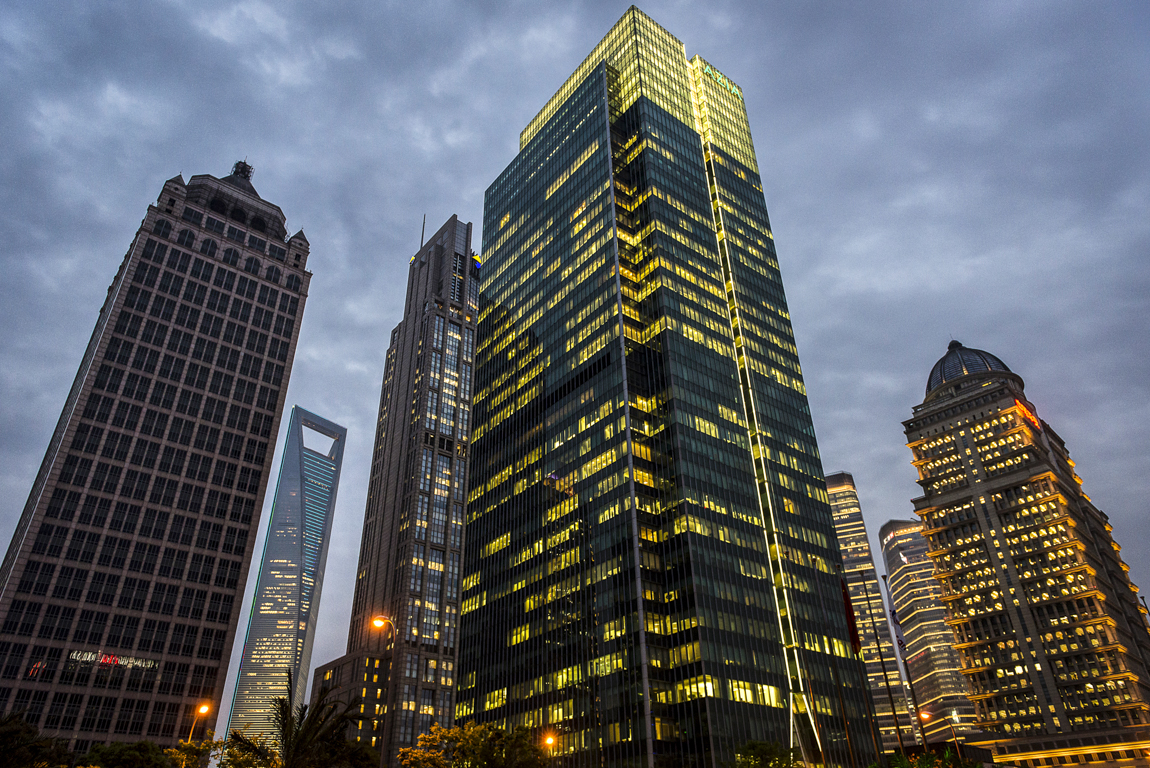
Across from the Peace Hotel, a statue of Mao Zedong is looking out over the river. If statues could cry, it wouldn’t have stopped for the last thirty years. If you would have been standing here looking at Pudong (literal translation: eastern bank) in the early nineties, you would have seen little more than a few rusty warehouses. Well, the view is slightly different today. The new district of Lujiazui doesn’t exactly align with Mao’s vision for the country. The abundance of towering glass skyscrapers plastered with neon lights, corporate logos and expensive sky bars is nothing more than an ode to capitalism. Four towers rise above everything else. The graceful Shanghai Tower, at 632m, is the second tallest building in the world; the Shanghai World Financial Centre is the blue tower that looks like a bottle opener and the Jinmao Tower is the most beautiful and classic among the lot as far as I’m concerned. By far the most unique mega-building in Pudong is the Oriental Pearl Tower. It looks like an intergalactic Christmas tree topper and has been standing here since 1994 when the rest of the area was still almost empty. Lujiazui is one of the most in-your-face parts of Shanghai, and you quickly feel like you’re navigating an anthill, but even here there are quiet spots to discover. Behind the Oriental Pearl and the Shanghai Ocean Aquarium is a small park with cosy pavilions where I used to drink Tsingtao beers after the fair was over, and the promenade on this side of the river is much less crowded than the Bund. Perfect for a quick breather.
3. East Nanjing Road: a people-spotting paradise for shopaholics
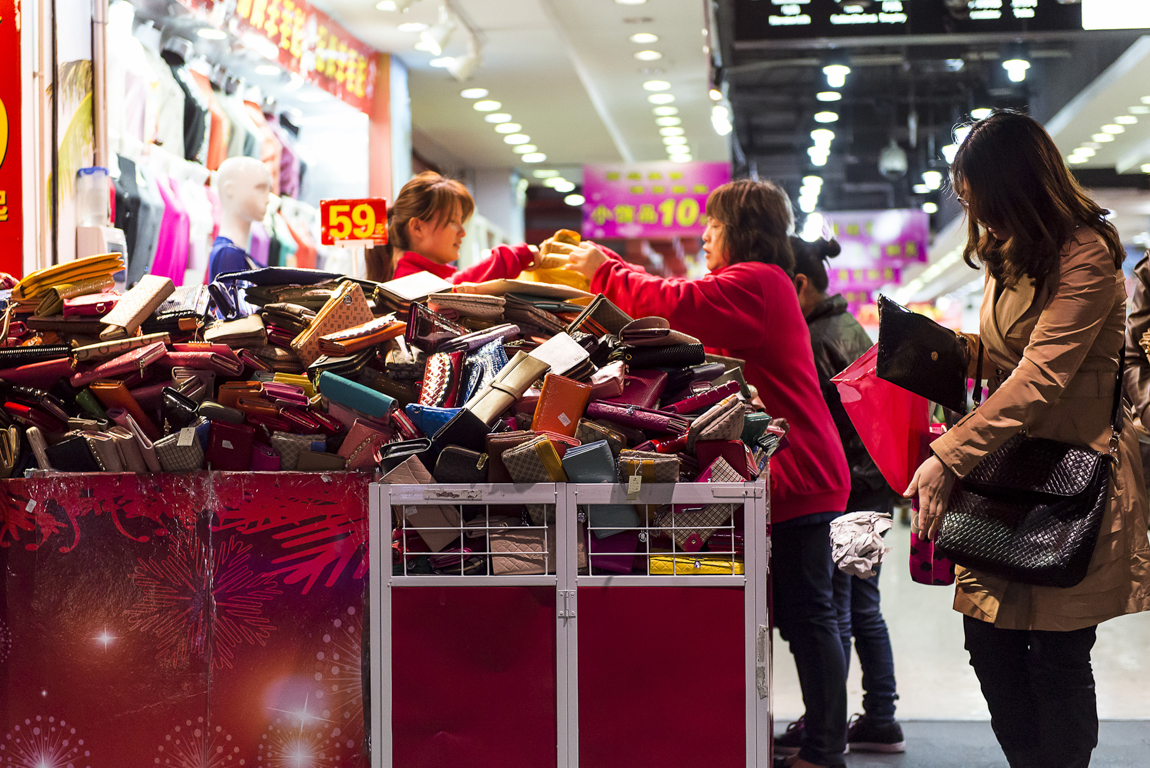
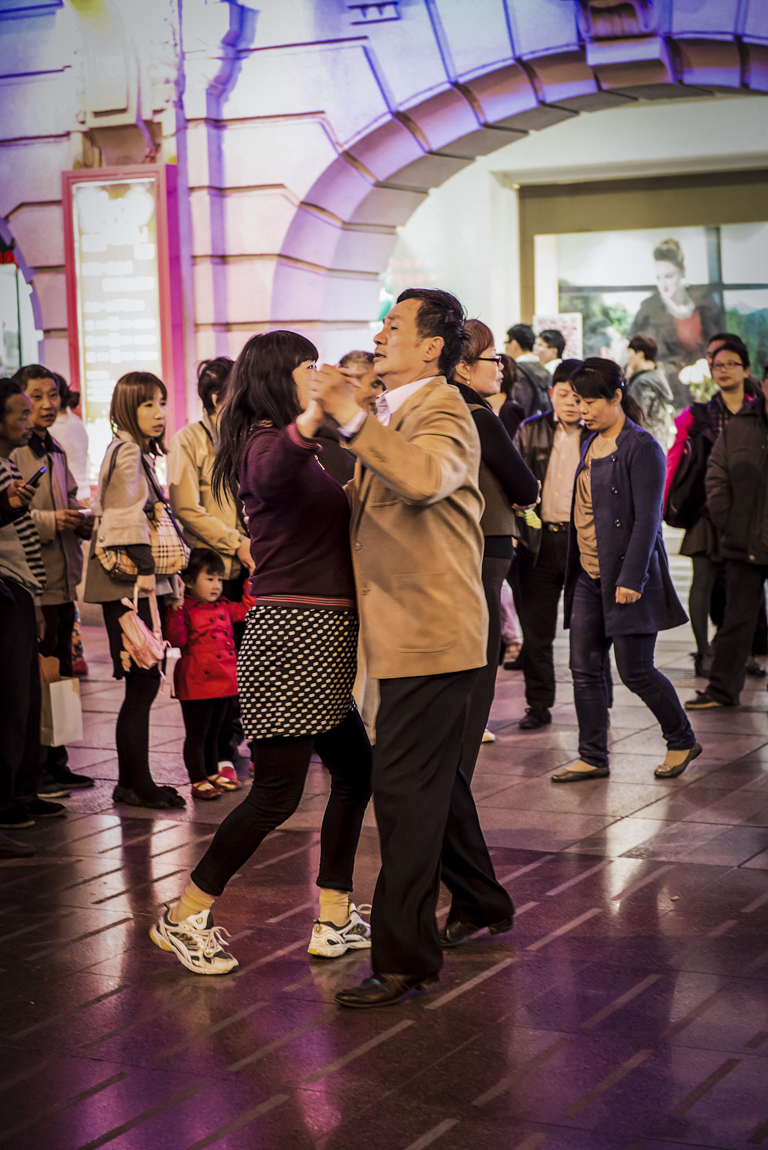
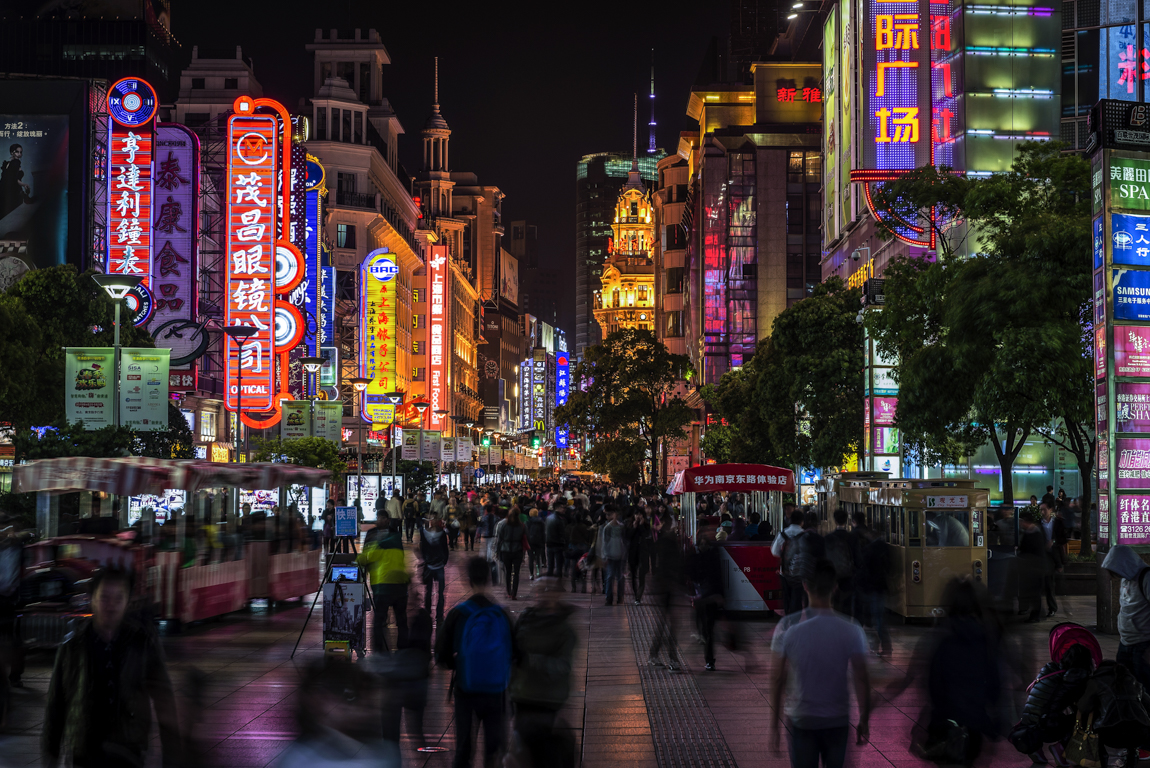
Want to indulge yourself in the complete Shanghai experience right after arrival? Get out of the subway at beautiful People’s Park and walk straight towards the Bund. You’ll do so over East Nanjing Road. This is one of the few streets in Shanghai where cars are not allowed, and probably the most famous shopping street in China. Imagine the main shopping stretch in your own city during summer sales, multiply the intensity by a hundred, slam down a fully equipped mall every fifty meters and you’ll get a good idea of what’s happening here. Nanjing Road is loud, hectic and very busy, but once all the lights come on after sunset, it turns into an almost magical place. Dozens of hustlers try selling you fake watches or massages, public karaoke sessions are everywhere, tourist trains try to get through the crowds, and there might even be a massive public tango lesson happening. It’s an assault on the senses, but I love it. This is the ideal place to just sit down, take it all in and watch the spectacle of humanity pass by. There’s often delicious and surprisingly cheap food to be found in the side streets by the way. Don’t fully trust these places and want to order something in a chain restaurant where you can actually understand the menu? Don’t be silly, but if you insist: Ajisen Ramen is completely superior to your average McDonald’s.
4. The French Concession: fashion, hipsters and beautiful parks in Shanghai
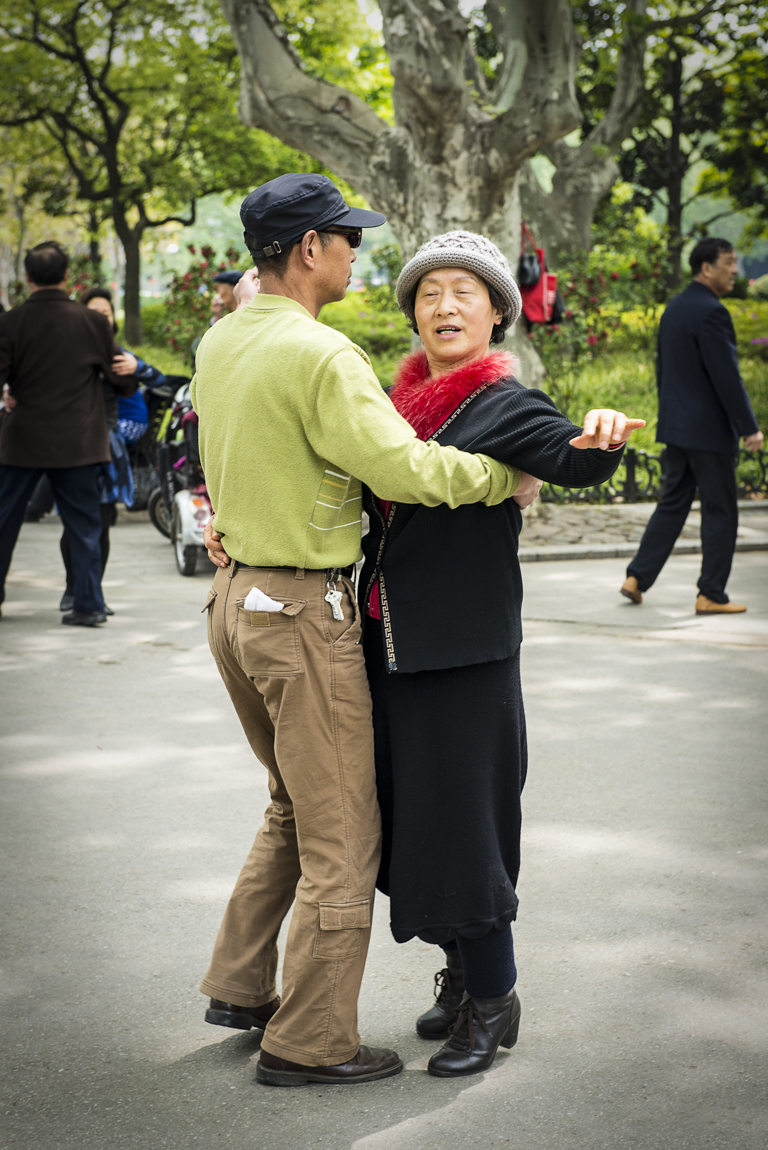
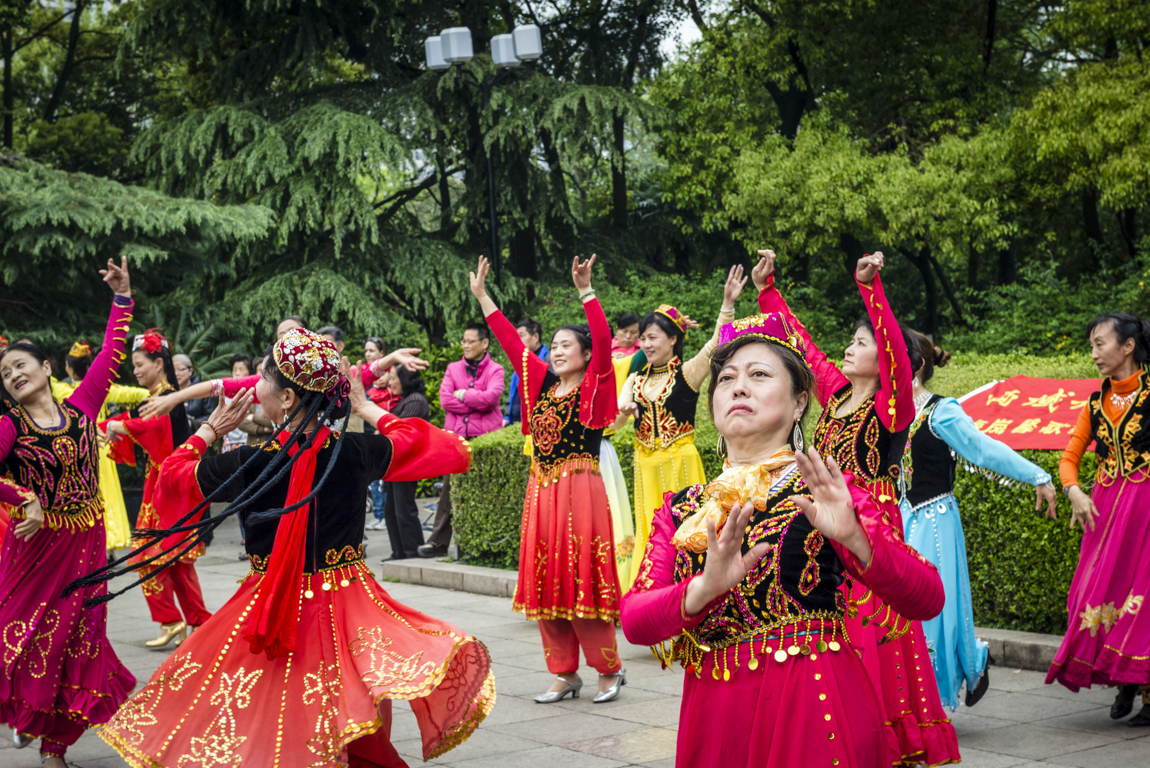
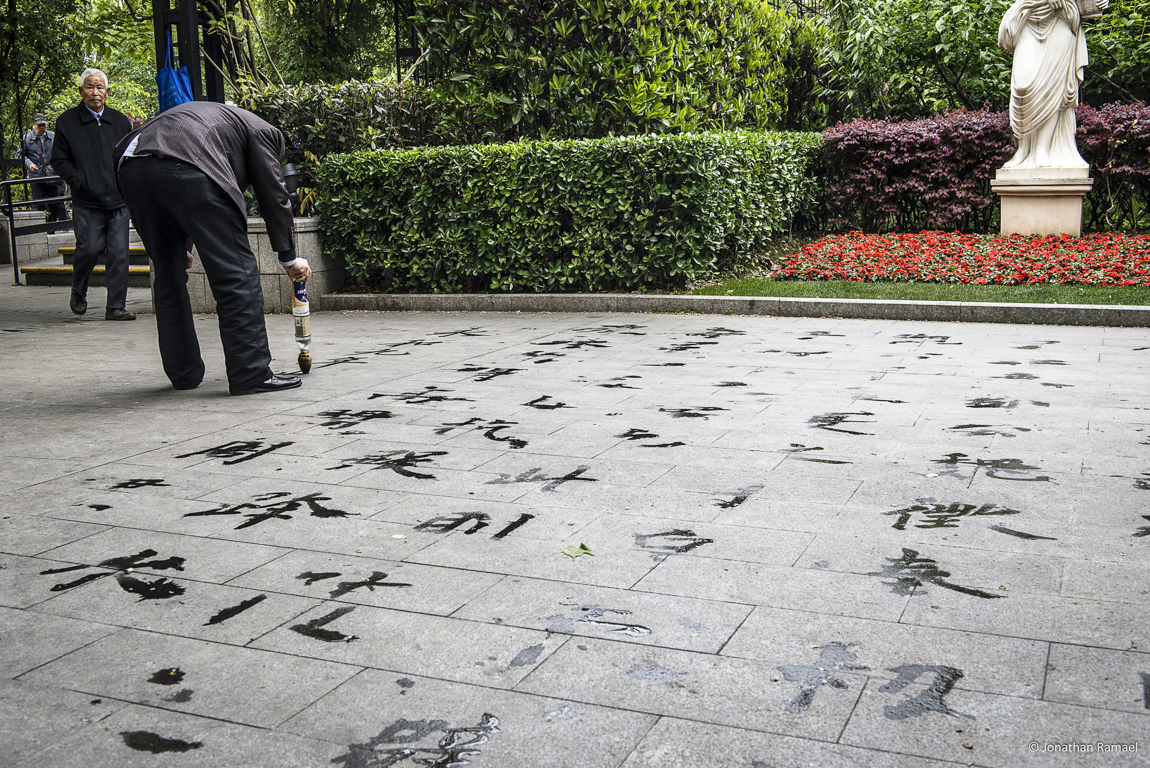
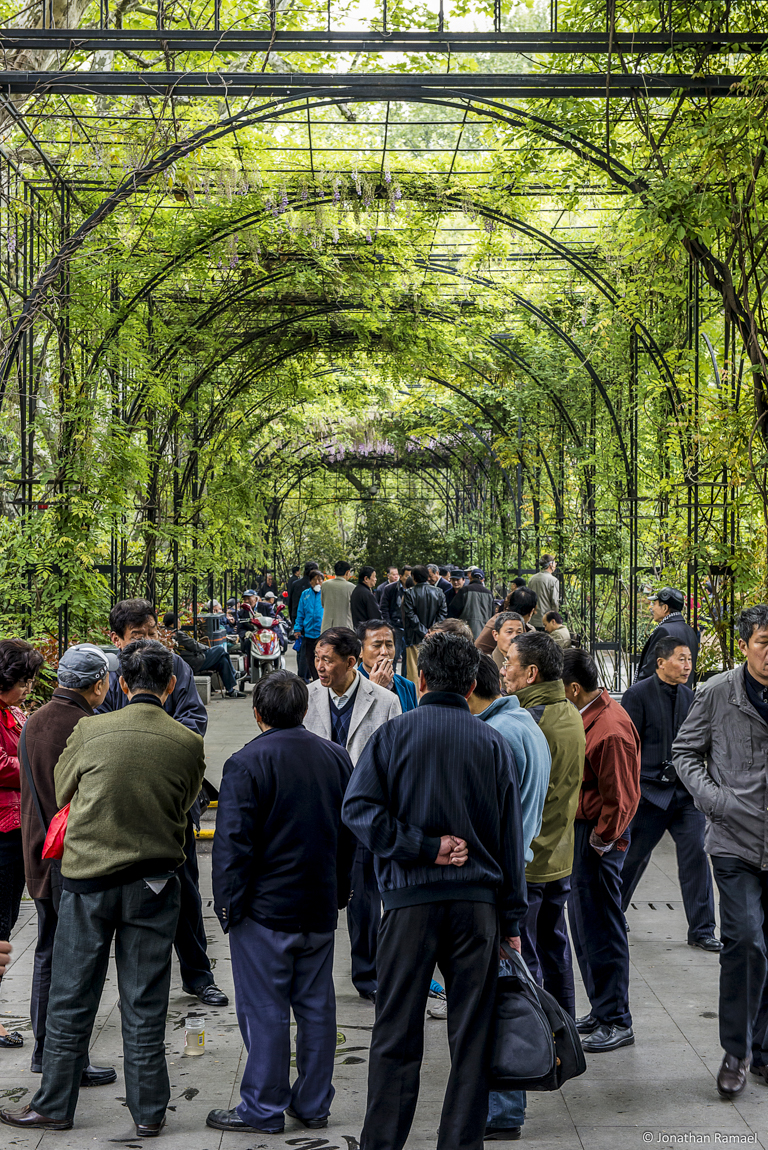
The former French Concession is one of the trendiest areas in Shanghai and one of the greener ones as well. Many old houses still remain here, and numerous streets are lined on both sides with sycamore trees imported from France. This is where the term ‘Paris of the East’ originated, and where the wildest adventures took place. A hundred years ago, the concession was filled with gambling dens, bars and brothels. Today, things became considerably more well-behaved, but it’s still one of the neighbourhoods where most foreigners live and socialise. The bar scene is lively, there are plenty of fashion boutiques to explore, and food options are extensive and varied. The French Concession is a pleasant neighbourhood to explore on foot, laid out in a somewhat smaller scale than the majority of the rest of the city. Fuxing Park adds an expansive French style green haven to the mix. Parks in Shanghai are genuine meeting places for the local communities and serve as one of the few public spaces where you can momentarily escape the hustle and bustle of the city. If you visit on a weekend you’ll be treated to a delightful spectacle: folk dance groups in traditional outfits, enthusiastic (though not always very competent) opera singers, elderly gentlemen in pyjamas practicing tai chi, well-attended mahjong or chess games, or the occasional artist practicing calligraphy on the pavement. In Shanghai, a stroll through the park is always fun.
5. Tianzifang & Xintiandi: old Shanghai in a new light
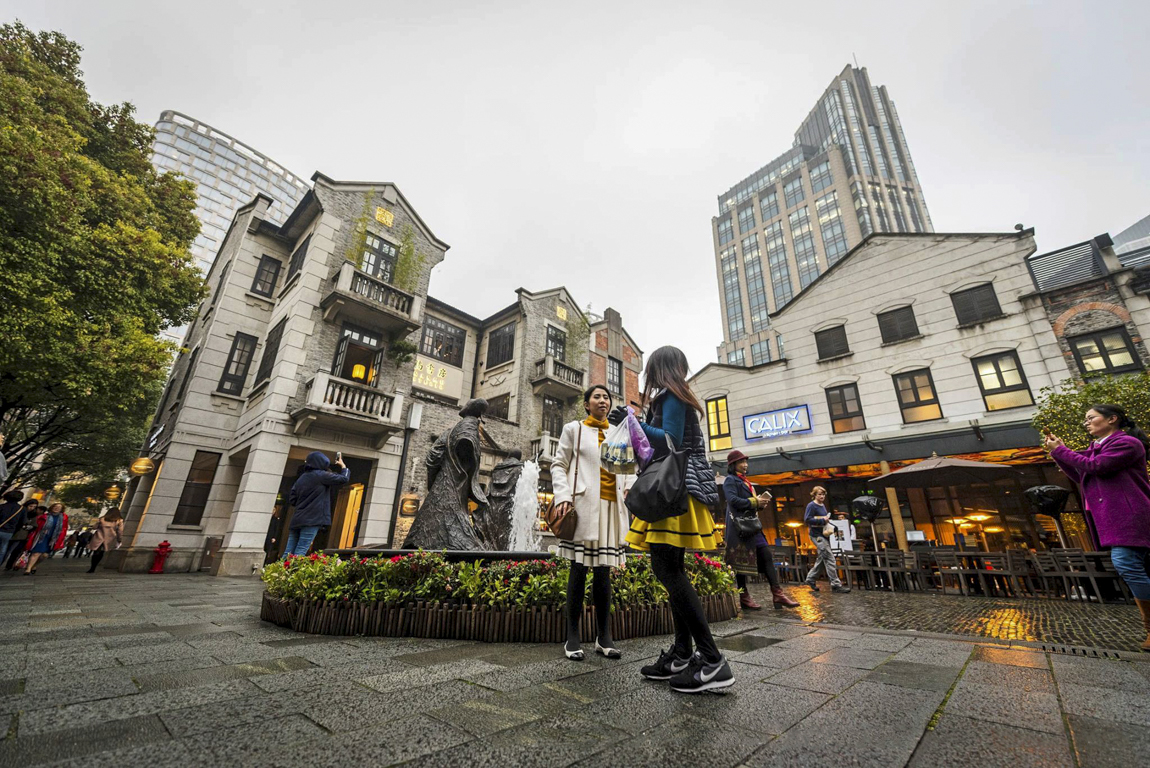
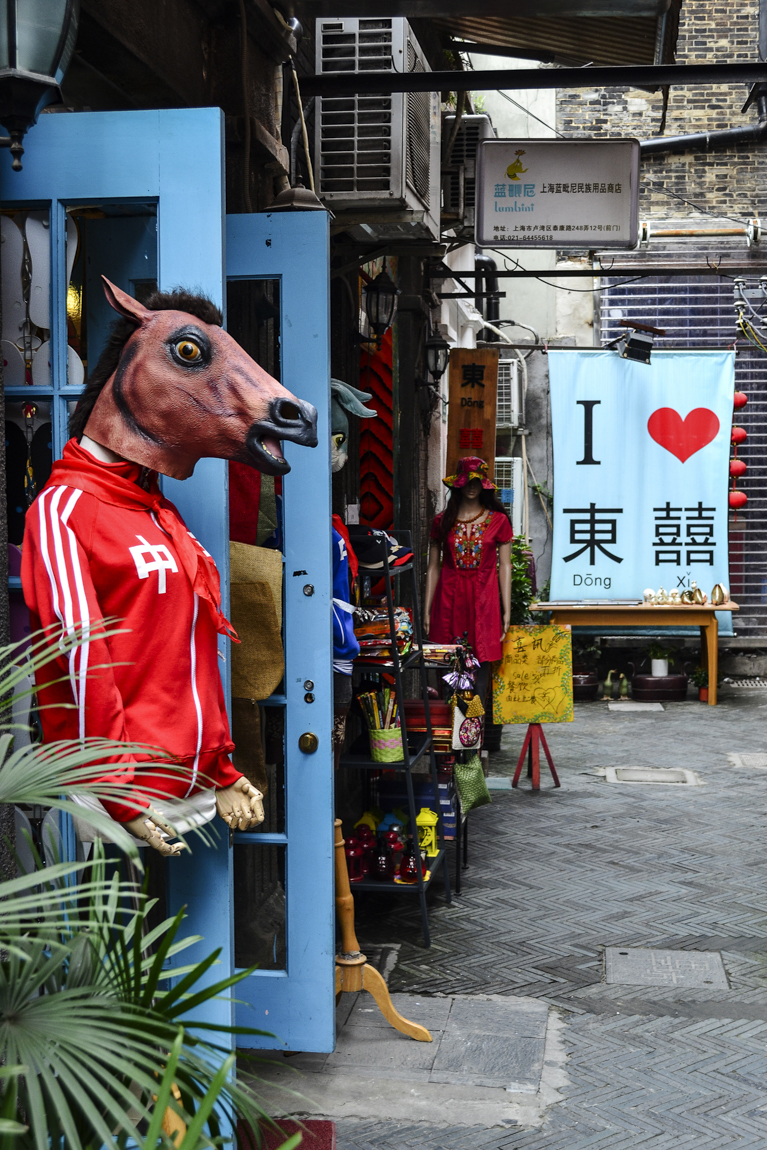
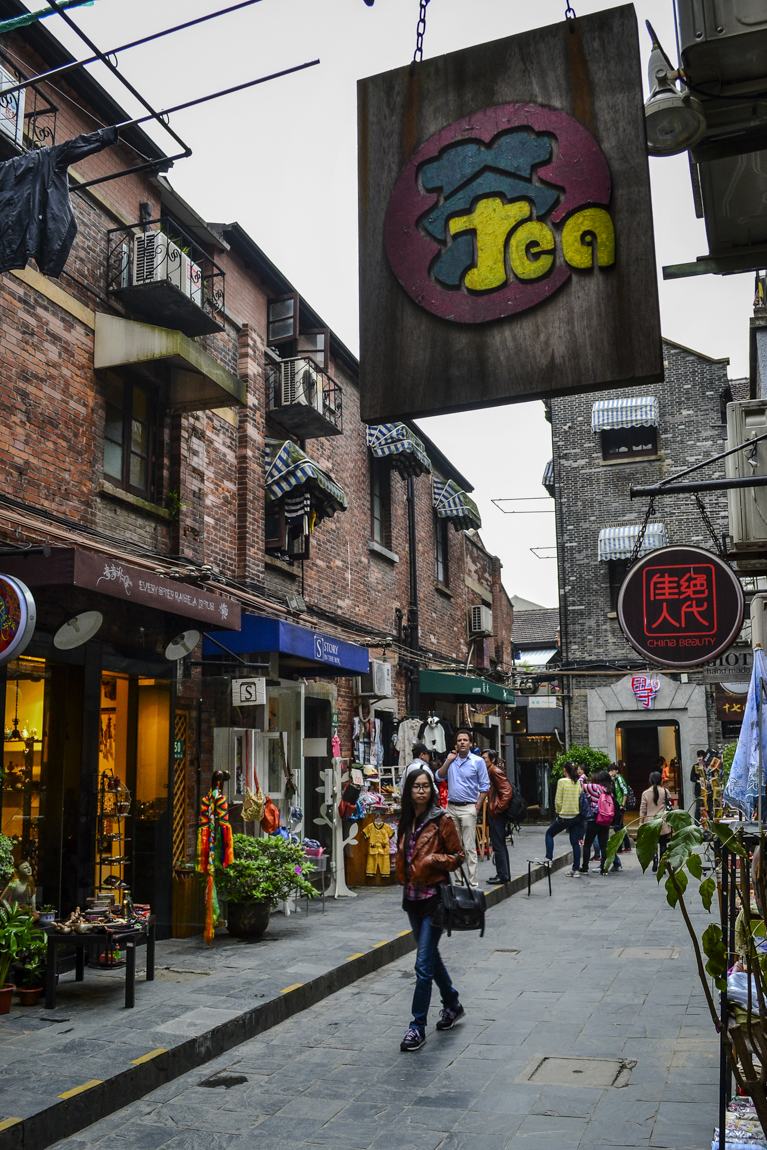
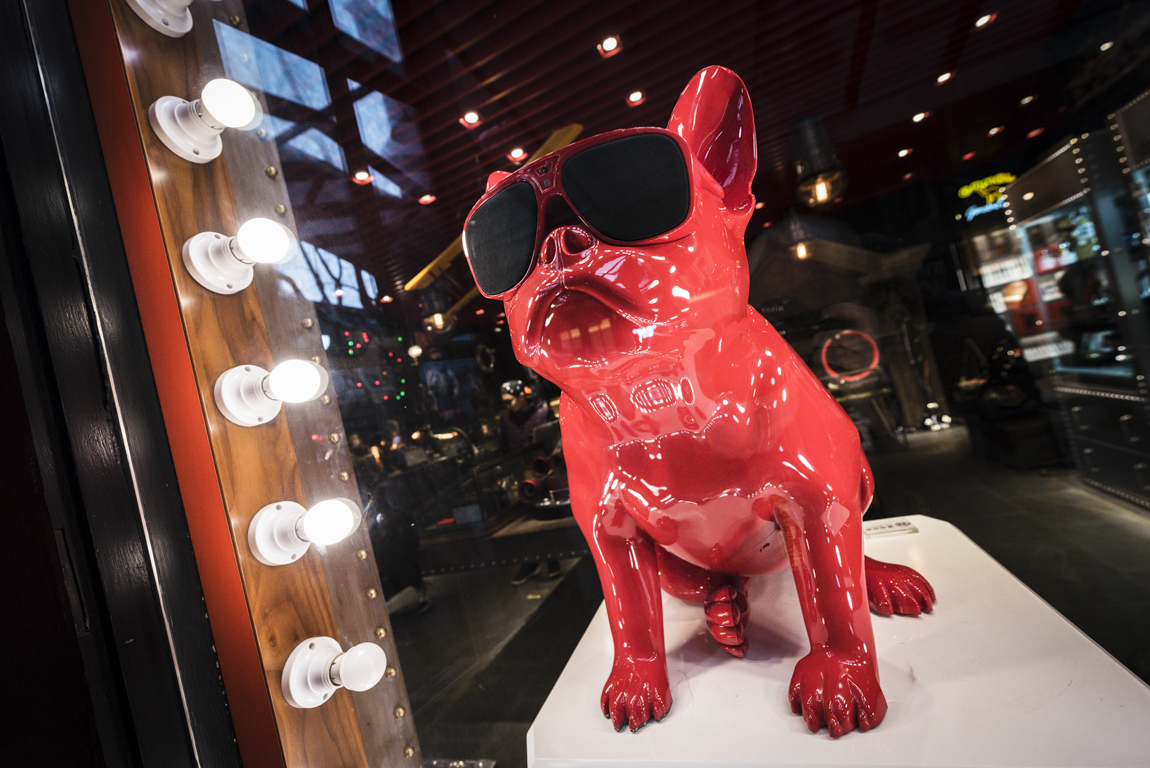
Over the past thirty years, most traditional neighbourhoods in Shanghai were torn down to make way for new developments, but in the French Concession two are still standing and were turned into tourist attractions. Tianzifang, in my opinion, is the most enjoyable and authentic of the pair. This neighbourhood, full of renovated Shikumen houses – two or three-story townhouses that blend Western and Chinese elements, quite typical of classical Shanghai – forms a delightful labyrinth of narrow little streets. Over the past fifteen years, they’ve been home to various small art galleries, bars, restaurants, and boutique shops, which allowed the place to turn into a tourist hotspot. Tianzifang’s greatest charm lies in its slightly rugged appearance. Clusters of electrical cables still run above the alleyways, and there’s a slight touch of chaos everywhere you look.
“Tianzifang and Xintiandi were among the first projects that demonstrated the value of historical architecture in Shanghai.”
Xintiandi is another Shikumen neighbourhood that underwent a complete renovation. It’s located in the French Concession as well, but a little closer to the city centre. Here, everything feels more posh and sophisticated but slightly less authentic, featuring high-end fashion stores, fancy bars and international restaurants. Very interesting though, is the Shikumen Open House Museum, where you can explore various furnished rooms to experience how the life of a wealthy Chinese person looked a hundred years ago. If you want to find out how it looks today, just walk back out, because Xintiandi is the most expensive neighbourhood to live in the whole of China. While Xintiandi is not actually very authentic, it was one of the first projects that demonstrated the value of historical architecture in Shanghai. As a result, similar projects have since been protected or developed in other areas.
6. The M50 Art District: alternative art in Shanghai
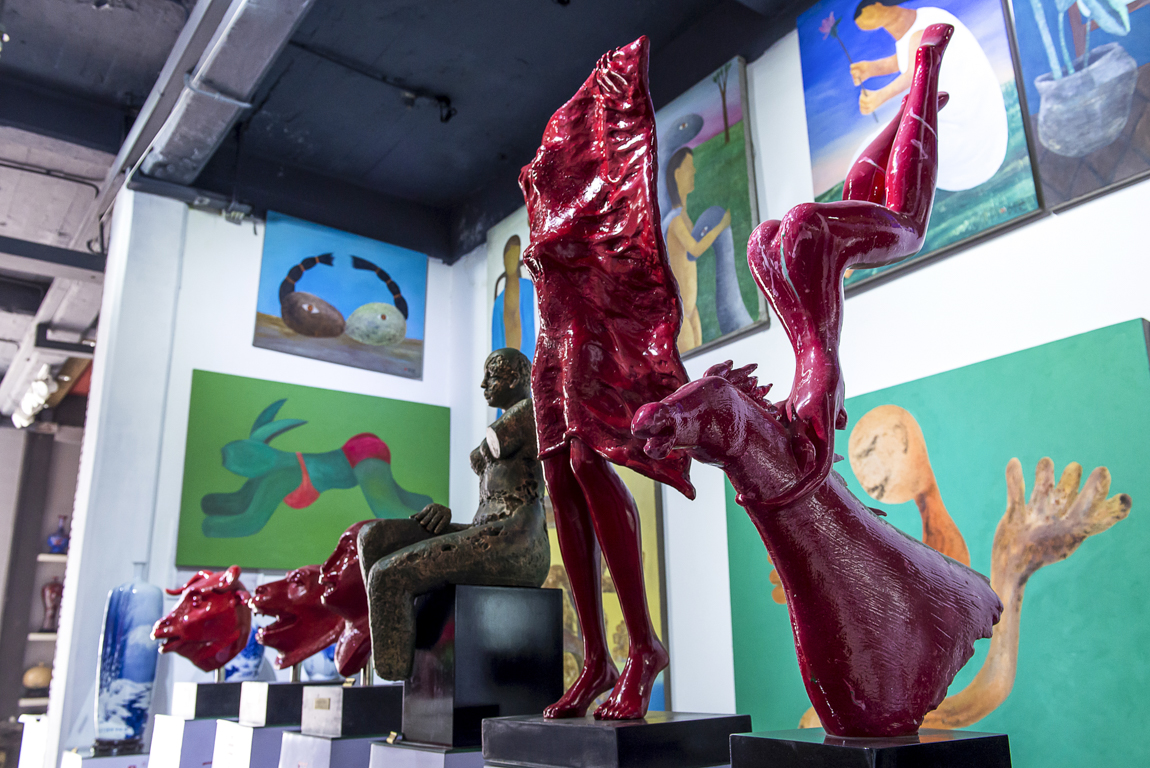
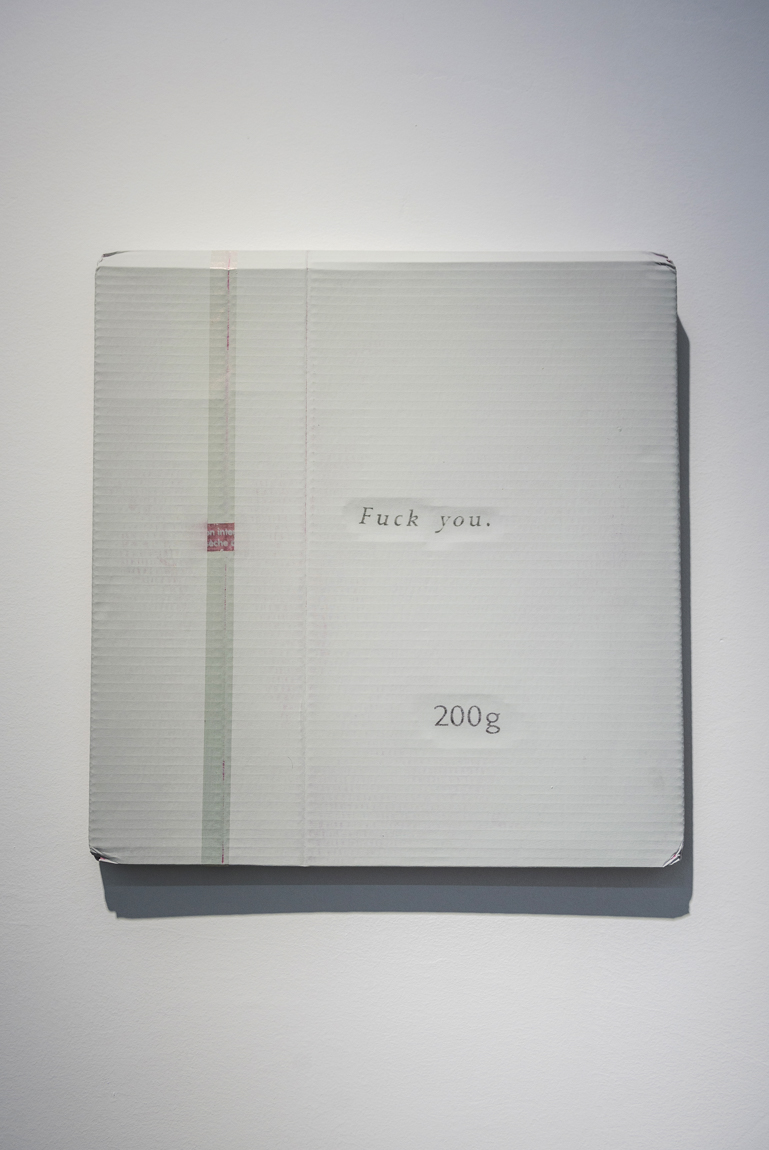
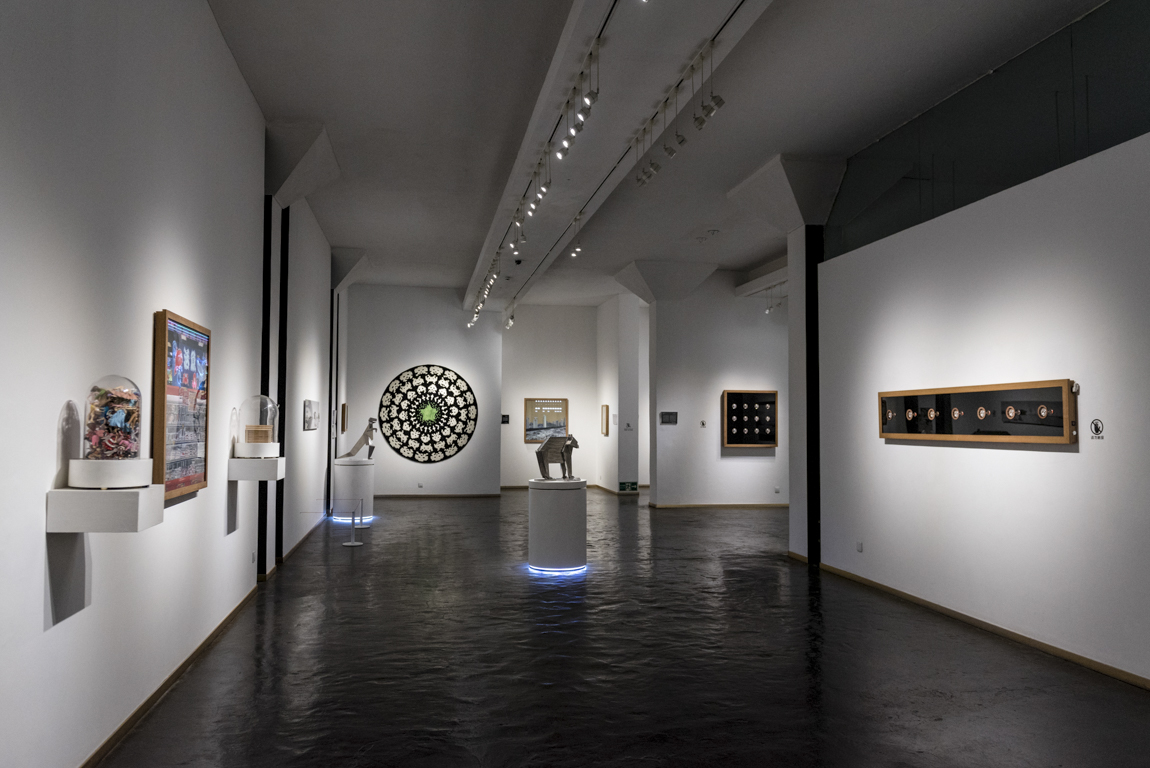
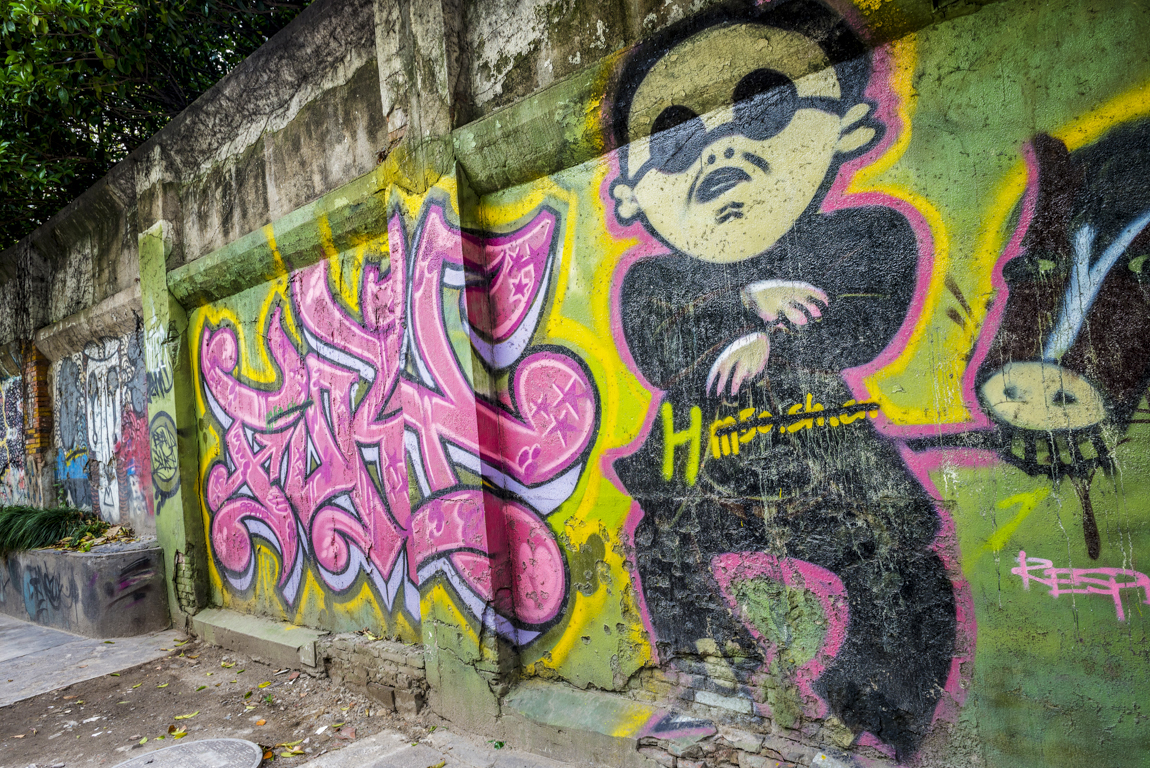
The M50 Art District is another beautiful redevelopment project in Shanghai. Hidden in the buildings of an old cotton factory, it became the city’s largest creative hub. Numerous art galleries, studios, and design shops have found a home here. The whole setup is a pleasant and eclectic mishmash in a surprising industrial setting. It’s enjoyable to explore for a few hours and is one of the few true enclaves for contemporary art and street art in Shanghai. Some of the studios are open to the public, allowing you to see the artists on the job from time to time. The main galleries include ShangART, island6, and OFoto for photography exhibitions. Done with your art browsing? There are several nice coffee bars and lunch spots available on the premises.
7. Museums in Shanghai
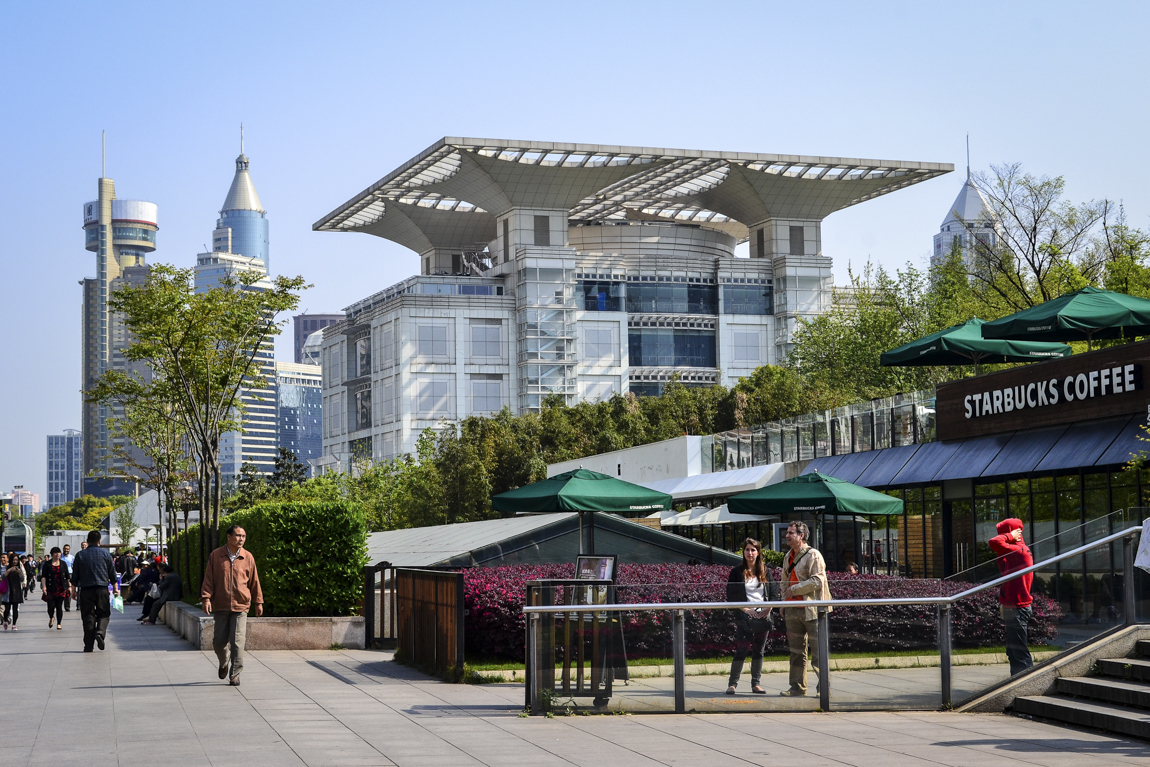
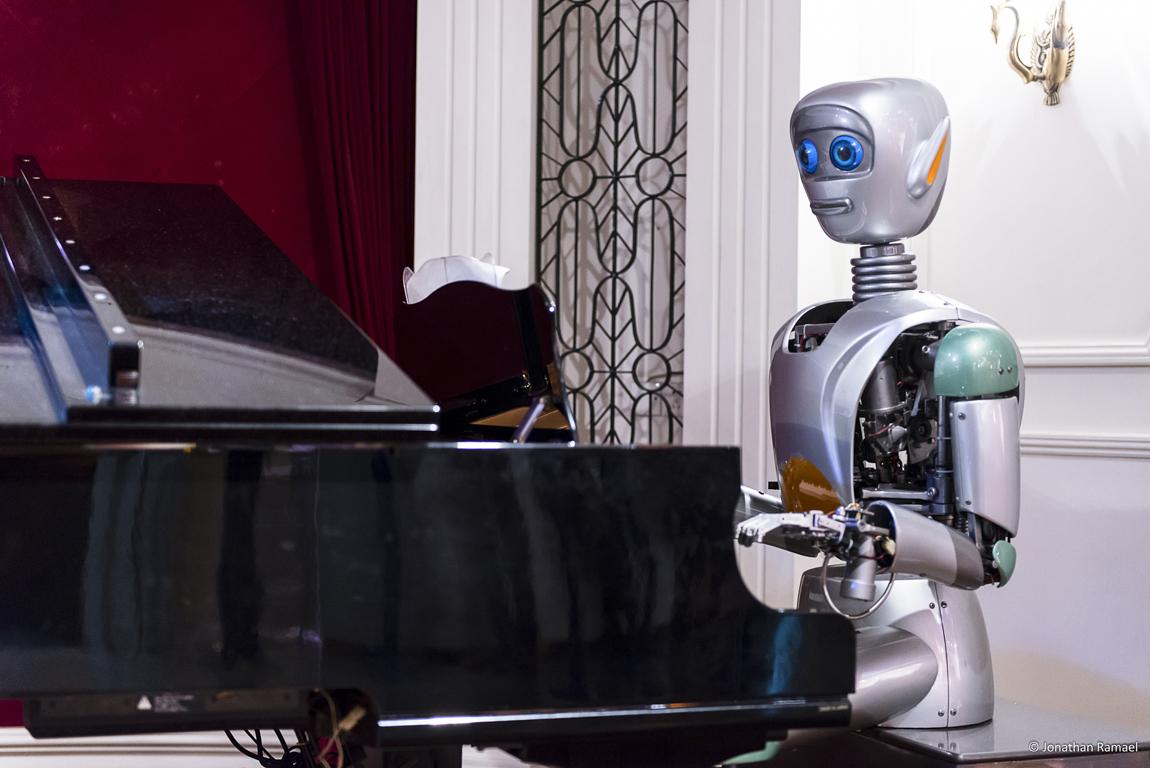
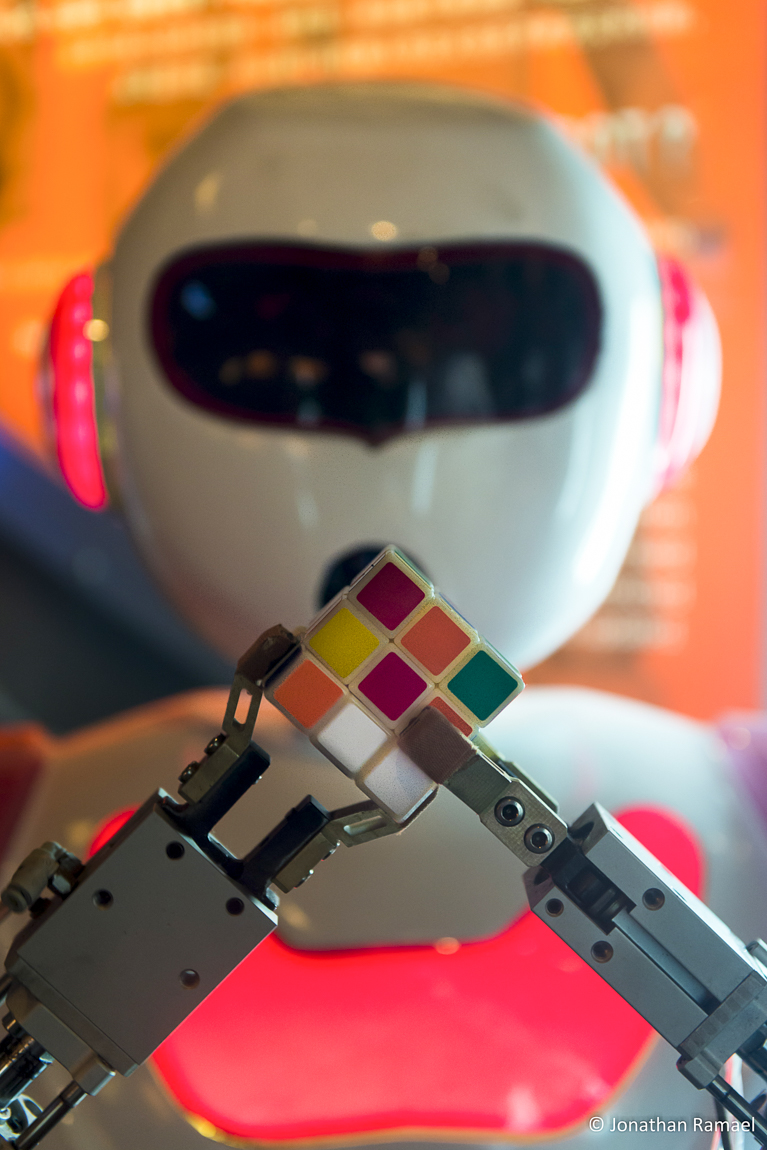
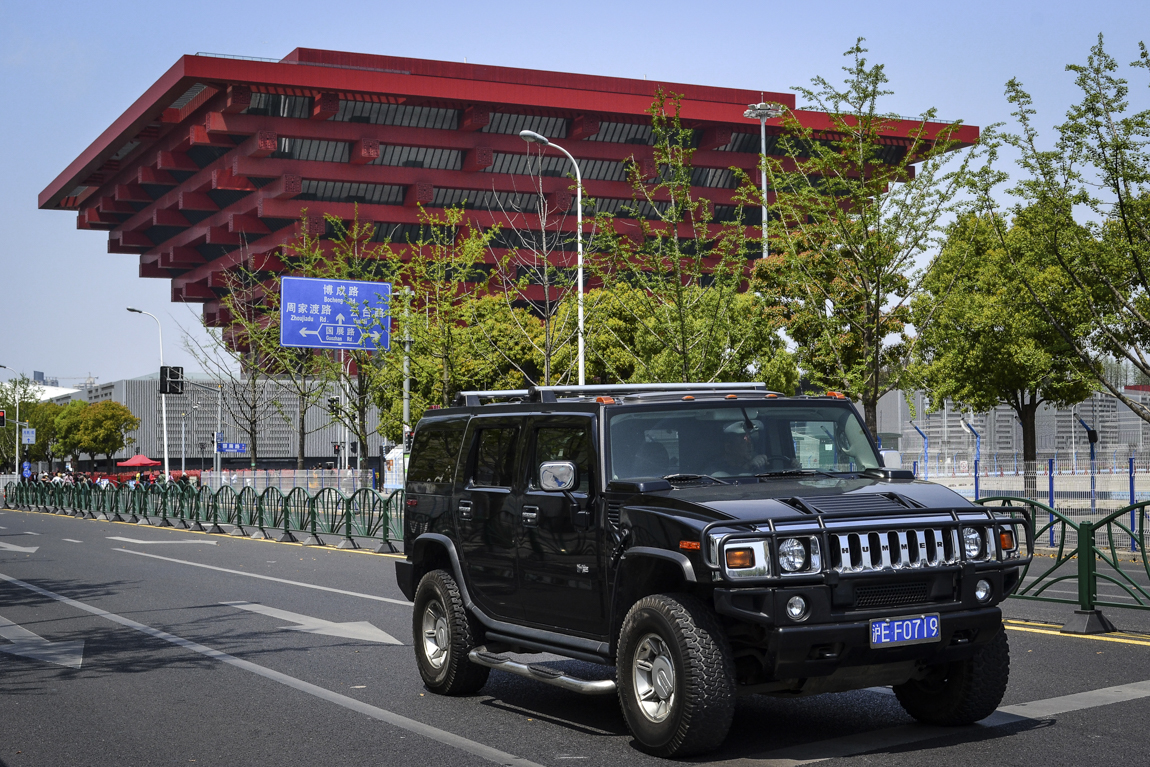
Shanghai may not boast the cultural wealth of Beijing, but for those looking to visit some top museums, the city still offers a plethora of choices. Here are the main ones:
–Shanghai Museum: impressive building in People’s Park, housing one of the world’s largest collections of classical Chinese art and artefacts. Across eleven galleries, you’ll find everything from bronze sculptures and ceramics to calligraphy and traditional costumes.
–Shanghai Science & Technology Museum: colossal and interactive science museum with a strong emphasis on robotics. When I visited a decade ago, there were already robots solving Rubik’s cubes, playing the piano or creating portraits of visitors. Currently closed for renovations until 2025.
–Shanghai Natural History Museum: housed in a fantastic new building since 2015, the Natural History Museum is renowned for its extensive collection of dinosaur skeletons.
–China Art Museum: located in the former Chinese Pavilion of the World Expo 2010. An incredible building and one of the largest museums of modern art in Asia.
–Power Station of Art: museum in an old power station, primarily showcasing contemporary art.
–Shanghai Urban Planning Exhibition Hall: museum in yet another impressive building, illustrating Shanghai’s rapid evolution over the past few decades. They showcase a massive scale model of the city’s current layout here, which was on display before many of the first bricks were even laid.
8. The Yuyuan Garden: visit Shanghai’s Chinatown
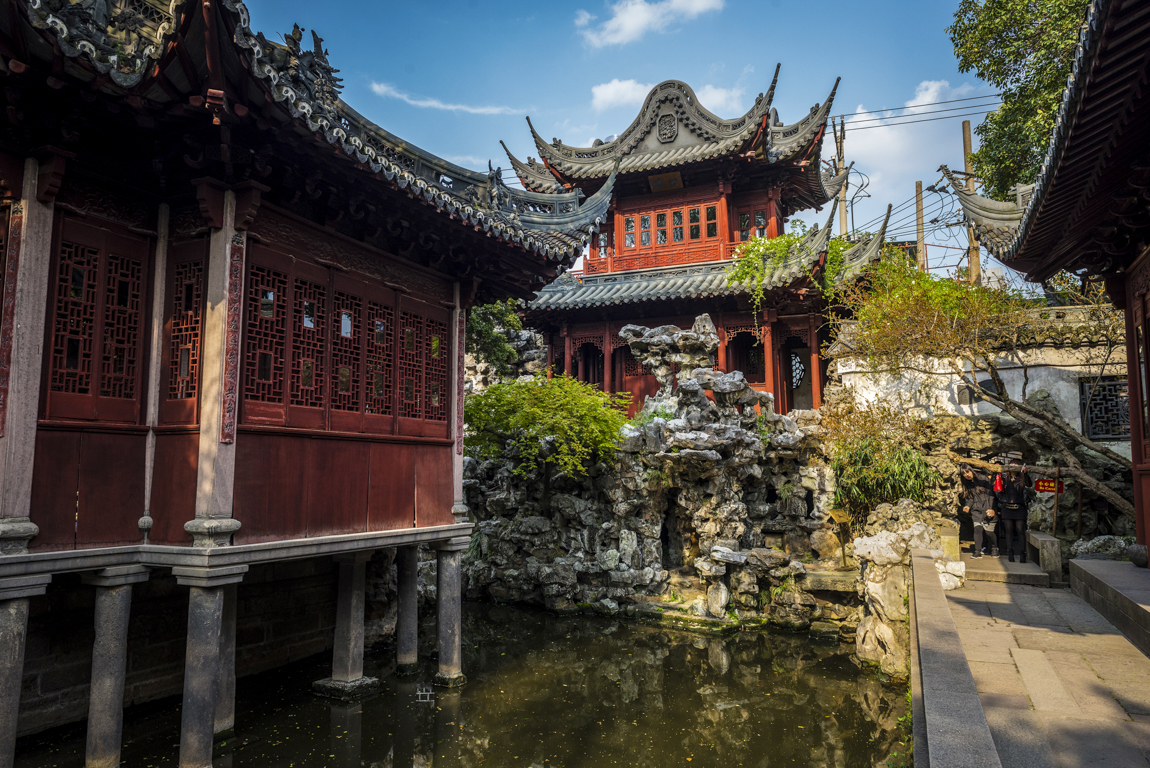
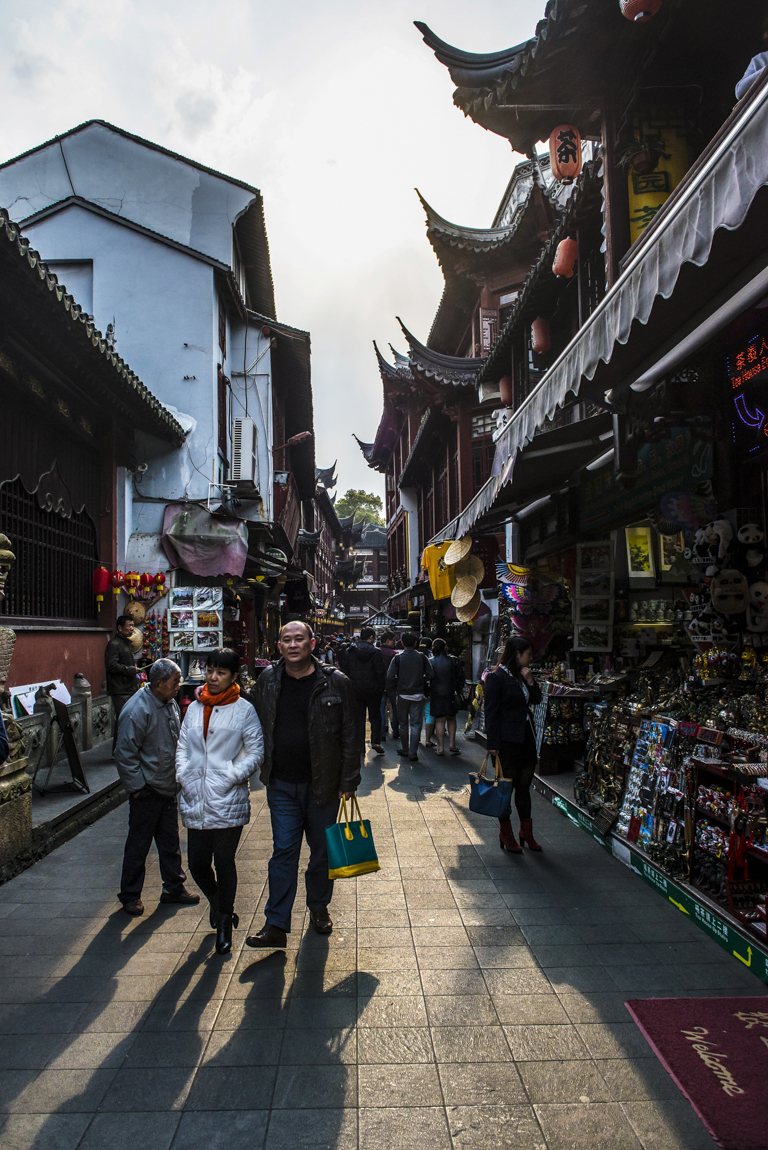
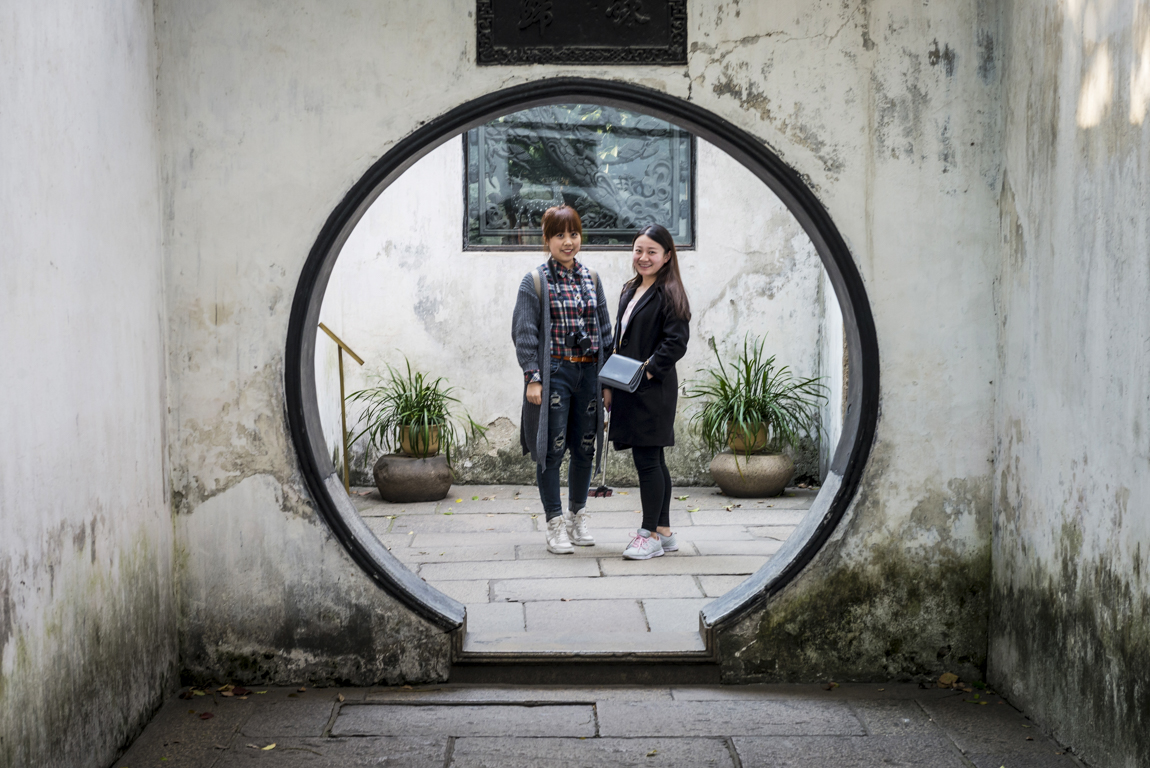
In the old town of Shanghai lies a place so stereotypically Chinese locals refer to it as Chinatown. The Yuyuan Garden is a perfect example of a traditional Chinese ornamental garden from the Ming dynasty. With its numerous koi ponds, pavilions, stone dragons and rock gardens, you’ll feel like stepping into a different world right in the midst of the bustling city. The garden is ingeniously designed, like a maze with multiple gates and pathways, creating the illusion of being much larger than it actually is. Those who prefer a leisurely visit should come early in the morning on a weekday, as the site is immensely popular among both Chinese tourists and Shanghai locals.
“In the old town of Shanghai, the Yuyuan Garden is a place so stereotypically Chinese locals refer to it as Chinatown.”
Just outside the garden, in the same style, is the Mid-lake Pavilion Teahouse: one of the most famous tea houses in China. The bridge leading to it zigzags to ward off malevolent spirits. These are apparently not the brightest of the bunch, as they’ll just give up and turn back when they can’t float to their ghostly destination in a straight line. Looking to score some souvenirs? There’s an incredibly busy but highly photogenic bazaar just outside of the garden.
9. The Jade Buddha & Jing’an Temple: looking for enlightenment in Shanghai
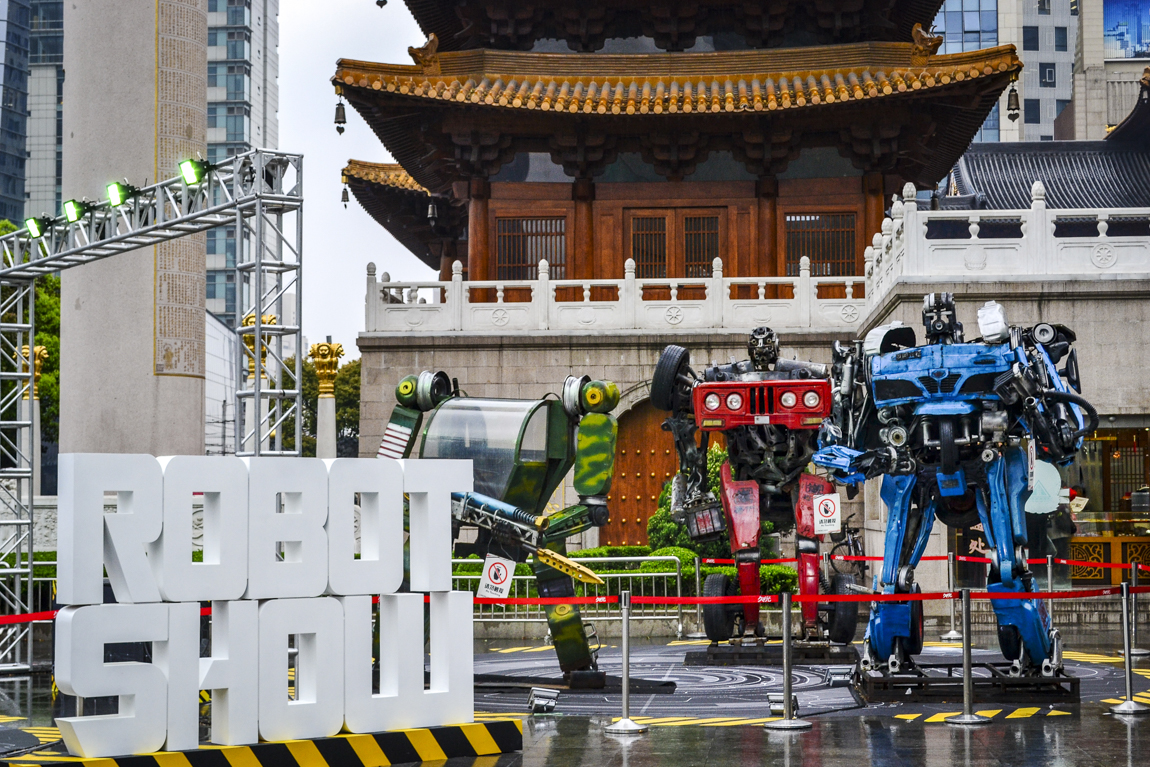
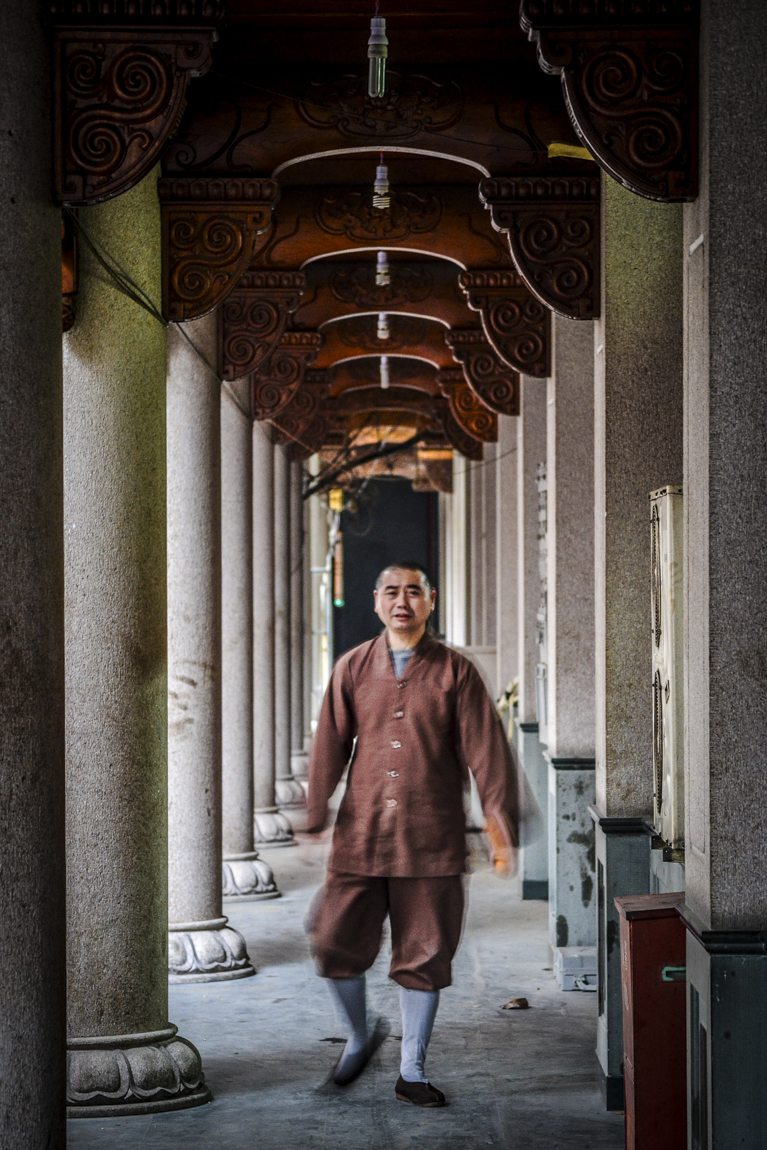
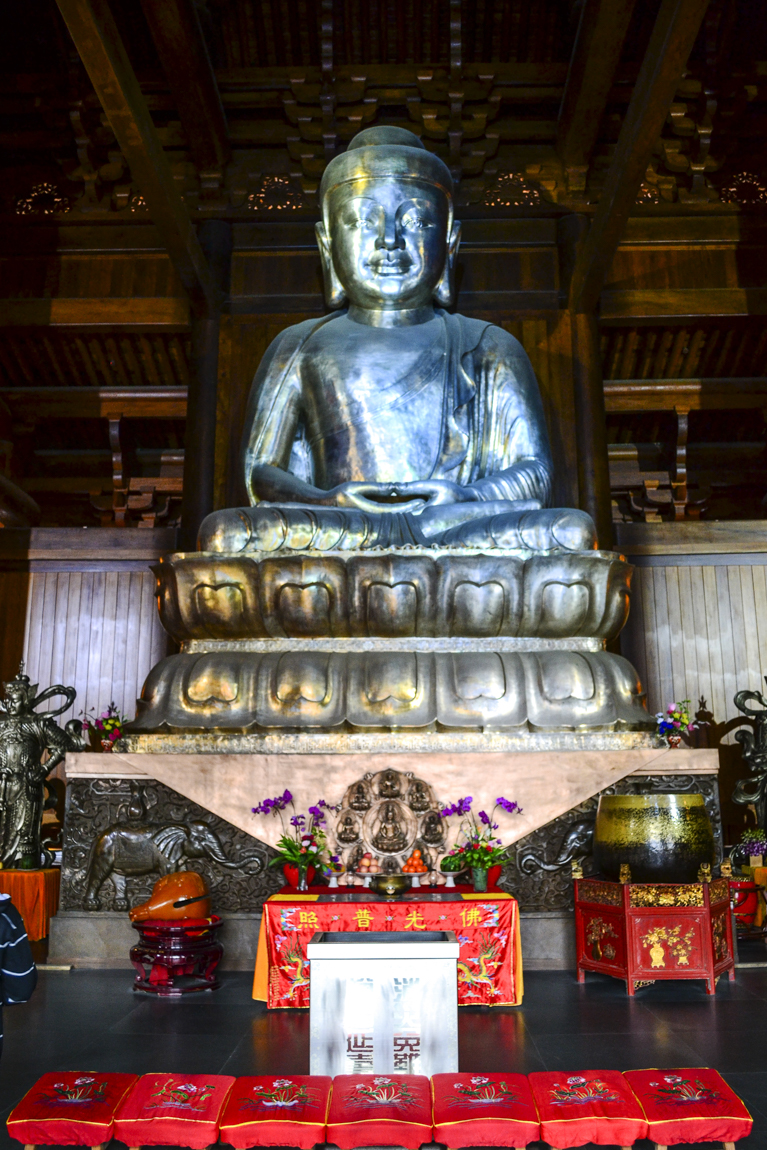
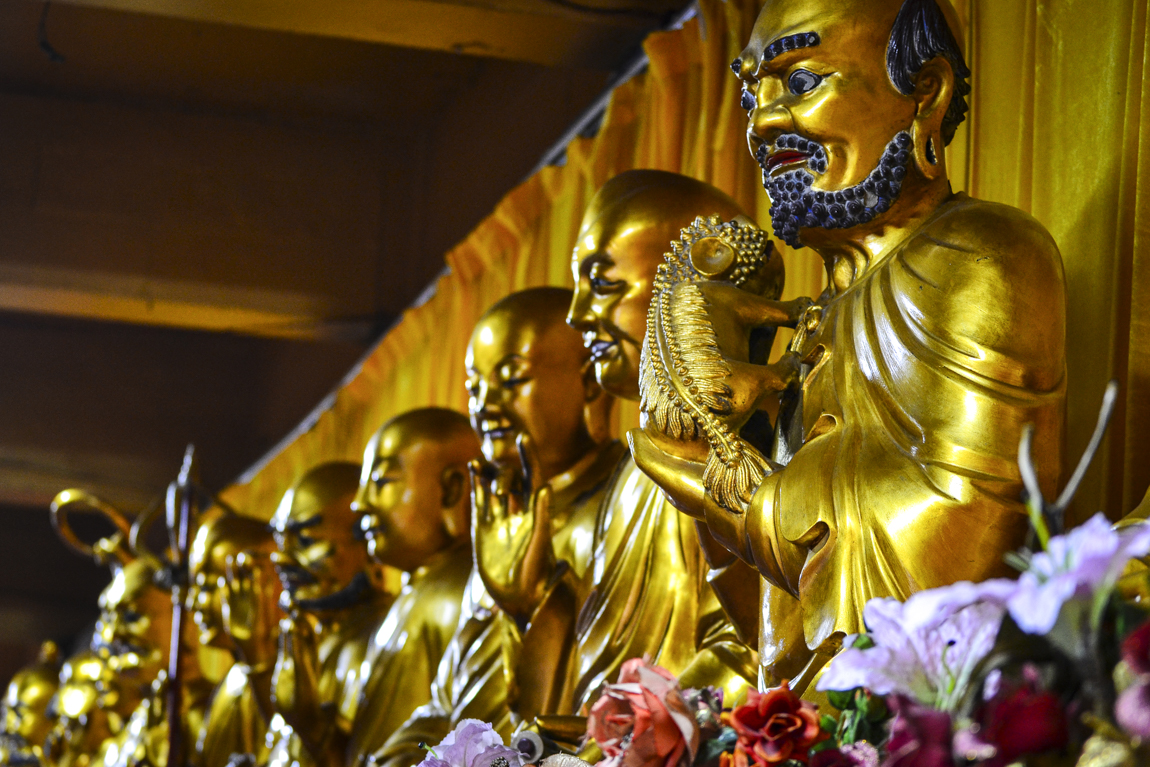
For those in Shanghai wishing to ascend to a higher realm without having to visit a rooftop bar for it, options are somewhat limited. In terms of atmospheric Buddhist temples in the city centre, there are only two real choices. The largest and most easily accessible (a metro stop is named after it, so you practically exit right on the doorstep) is the Jing’an Temple. This is an impressive temple complex that, dwarfed by the modern architecture surrounding it, still feels surprisingly small. Passing through the gate makes for a stark contrast with the outside, especially if, like when I visited, they installed a loud robot show with moving transformers right in front of the entrance. More popular and more regularly frequented by devout locals is the Jade Buddha Temple. This one exudes a bit more atmosphere, with the typical red lanterns at the entrance and a two-meter-long Buddha statue carved entirely out of jade. I’d love to show it to you, but photography in the temple is prohibited. I guess you’ll have to settle for my 12-year-old rainy Transformer pics.
10. Zhujiajiao: a day trip to Shanghai’s version of Venice
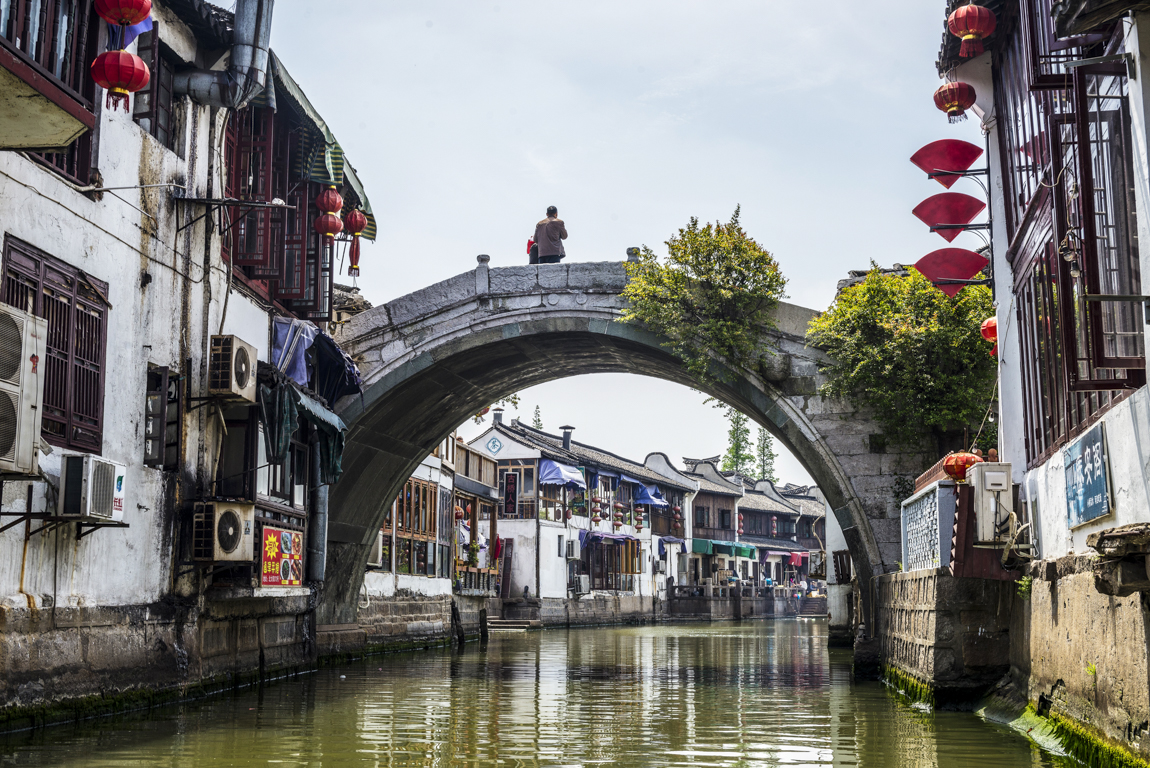
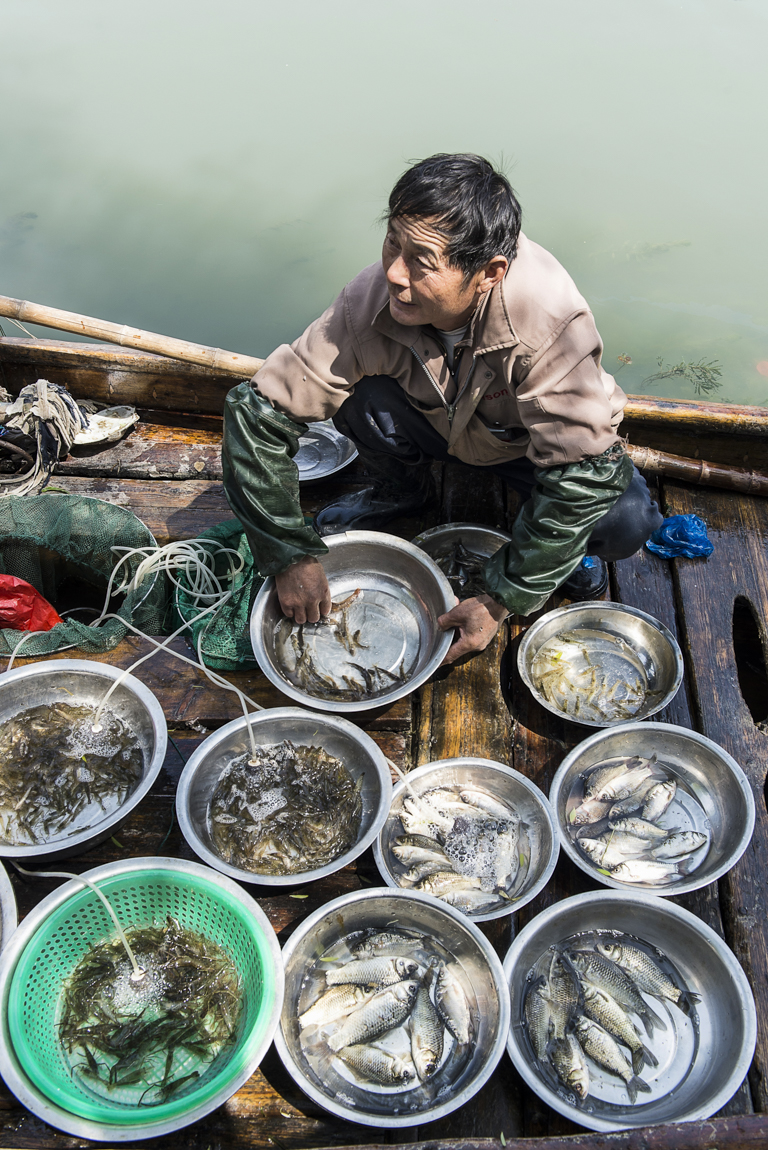
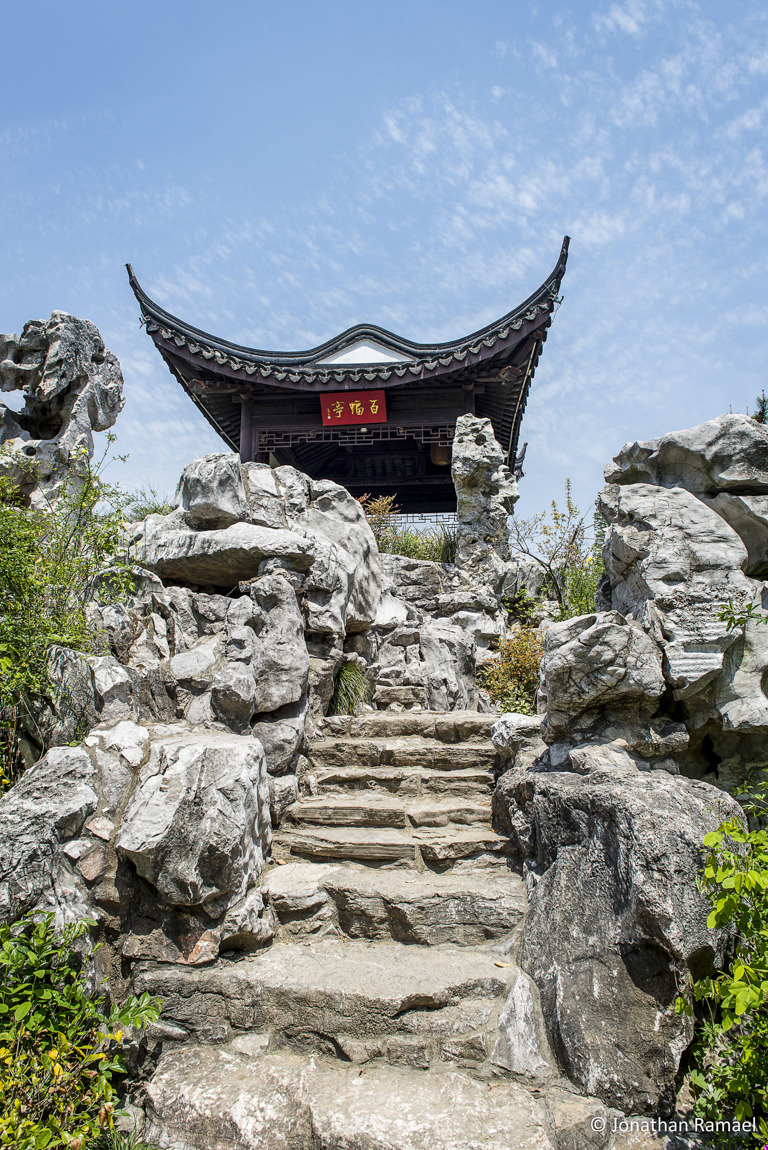
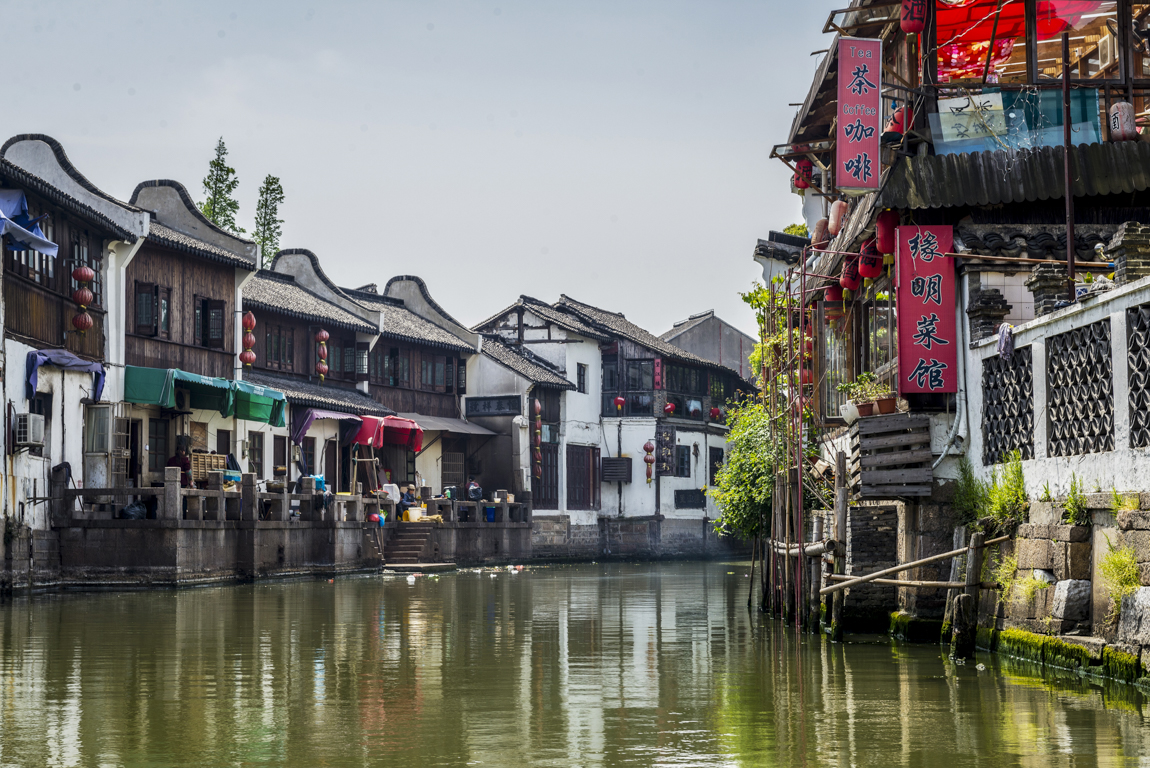
Visiting a huge city is fun and exciting, but sometimes you need a bit of small-scale charm. Thirty kilometres from the centre of Shanghai lies the picturesque canal town of Zhujiajiao. There, you’ll find a delightful mix of old buildings from the Ming and Qing dynasties, no less than 36 picturesque bridges and a multitude of boats reminiscent of Venice’s gondolas. Ideal for a change of pace, visiting the Chinese version of Bruges and getting into the tourists’ way for once instead of the other way around. Zhujiajiao is immensely popular, with its narrow lanes filled with small restaurants and souvenir shops, but it also comes with some beautiful temples and classical gardens to explore. An ideal day trip from Shanghai and perfect for anyone seeking a break from the bustling crowds. Small tip: although my visit is a decade old, I still recall a highly popular restaurant on the main street, selling breakfast dumplings filled with sesame seeds and sugar. Incredibly tasty, but don’t ask me where it is exactly.
Traveling to Shanghai: practical tips and post-covid thoughts
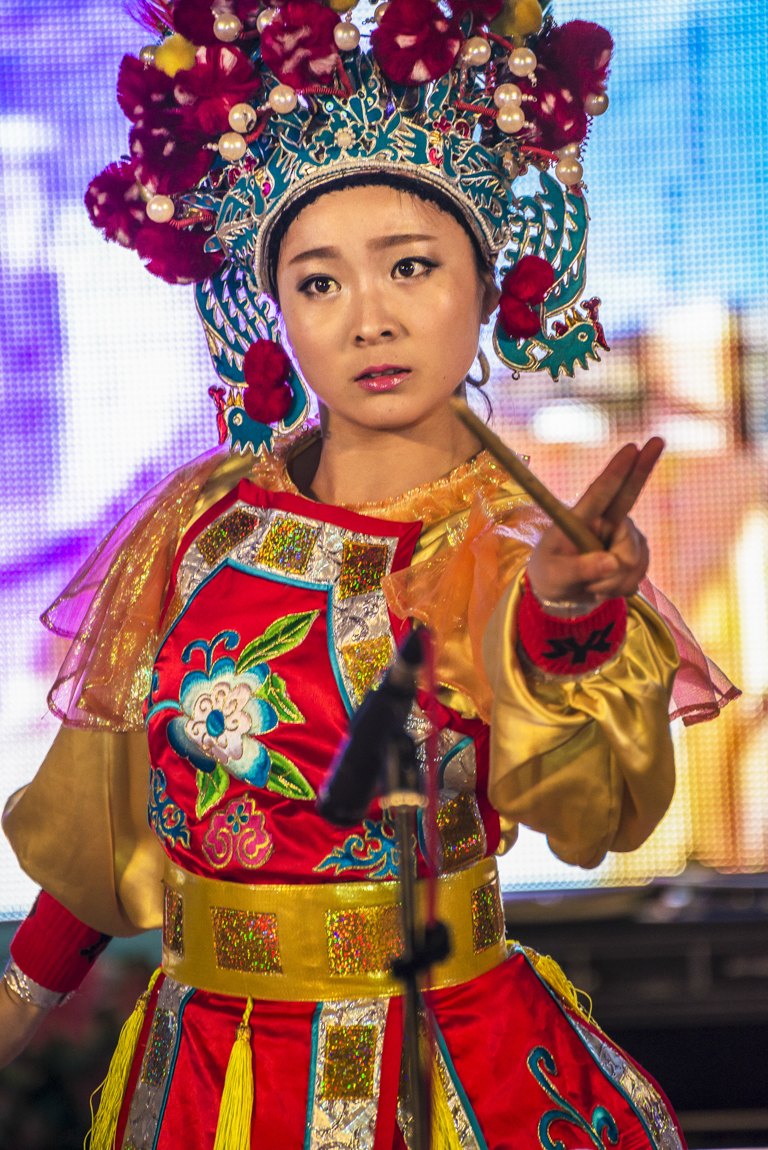
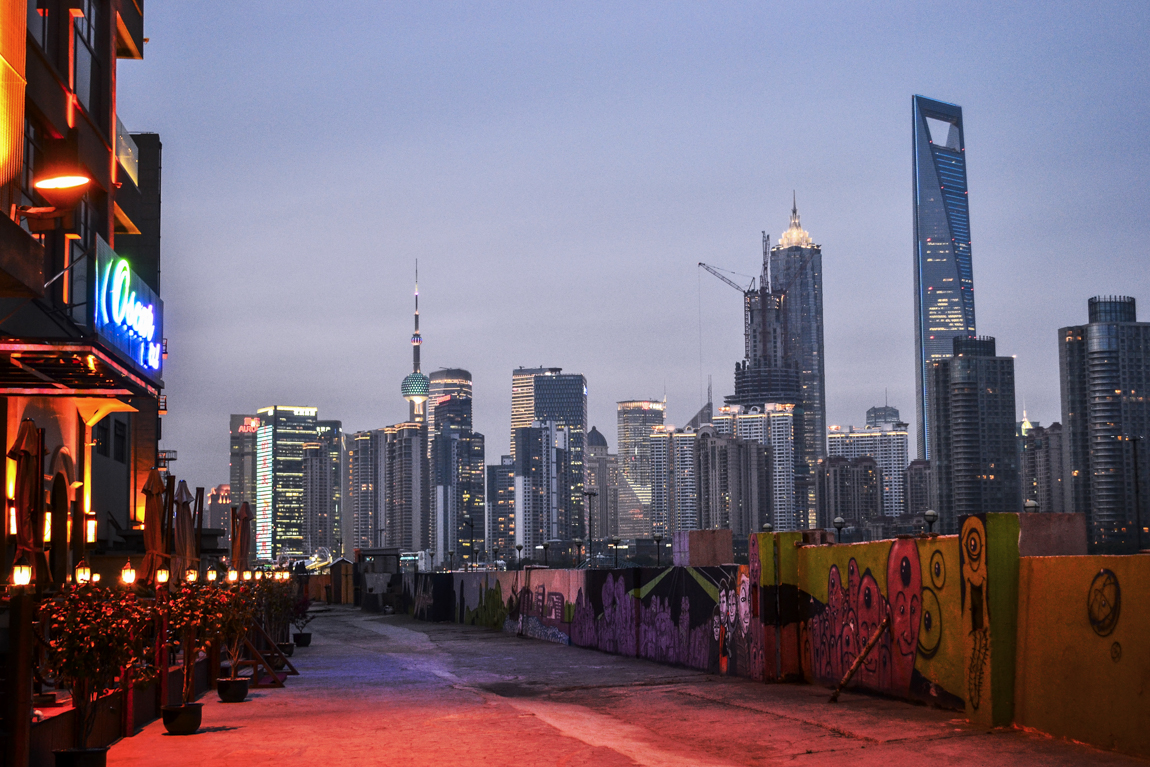
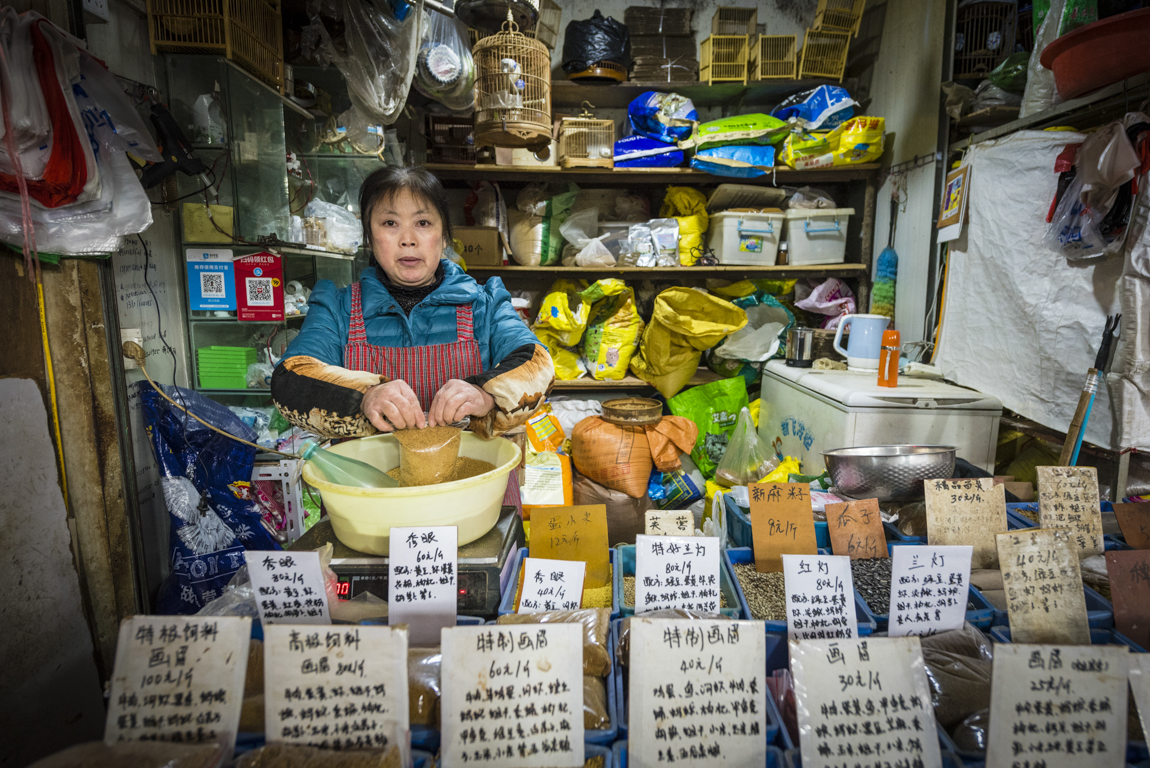
In the past, Belgians needed a visa to travel to China, but if you stayed in Shanghai for no more than 144 hours to then leave for another country, you could get a visa-free transit. As for now, things have temporarily changed. From March 14 to November 30 2024, Belgians travelling to China for tourism or business, no longer need to apply for a visa for trips of up to 15 days. I don’t know what the future holds for this arrangement, so I advise to check in advance with the Chinese Visa Application Service Centre in Brussels. www.visaforchina.cn
As you probably know, large parts of the global internet are blocked behind the Great Firewall of China. So if you want to stay on platforms like YouTube, Google, Gmail, Instagram, Facebook or WhatsApp, it’s best to subscribe to a paid VPN service for the duration of your trip (in advance). Technically, this is illegal, but in practice nobody really cares. Downloading VPNs once you’re already in China is almost impossible.
The subway is the cheapest and most practical means of transportation in Shanghai. Line two (the green one) connects the two airports with almost all of the attractions I mentioned above. Every stop is announced in English as well, so getting lost is quite unlikely
I already mentioned it at the beginning of my article. Every trip I made to Shanghai took place before 2020. This means I have no personal insight into the long-term consequences of three years of strict COVID restrictions. The videos I’ve seen online don’t paint a very positive picture though. Apparently, many European and US expats have left China, nightlife is far from what it used to be, and many shops and restaurants have shut down. I don’t have any contacts in Shanghai anymore, so if you have first-hand information, feel free to share your thoughts in the comments below.
Looking for a few other Asian trips? Read my articles on Singapore, New Delhi, Hong Kong, Taipei, and Hanoi.





























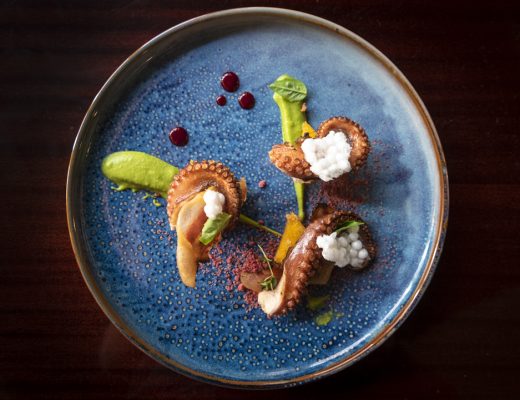

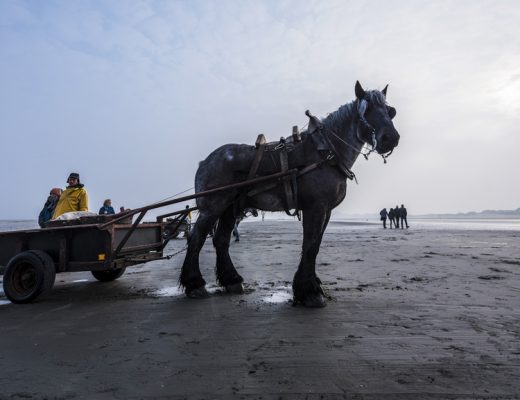

No Comments